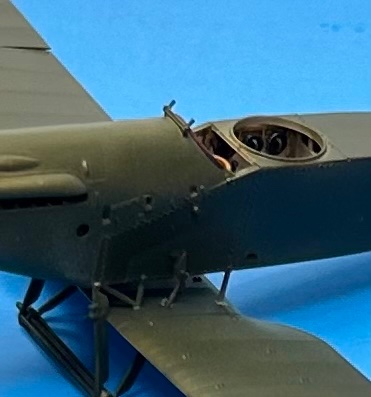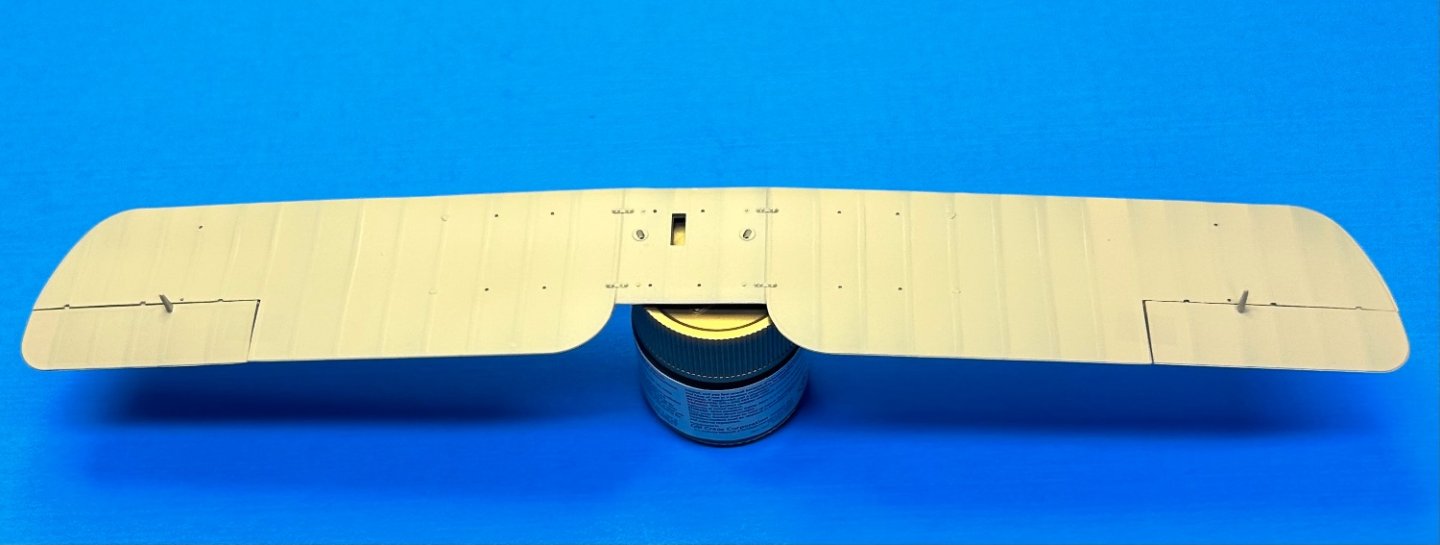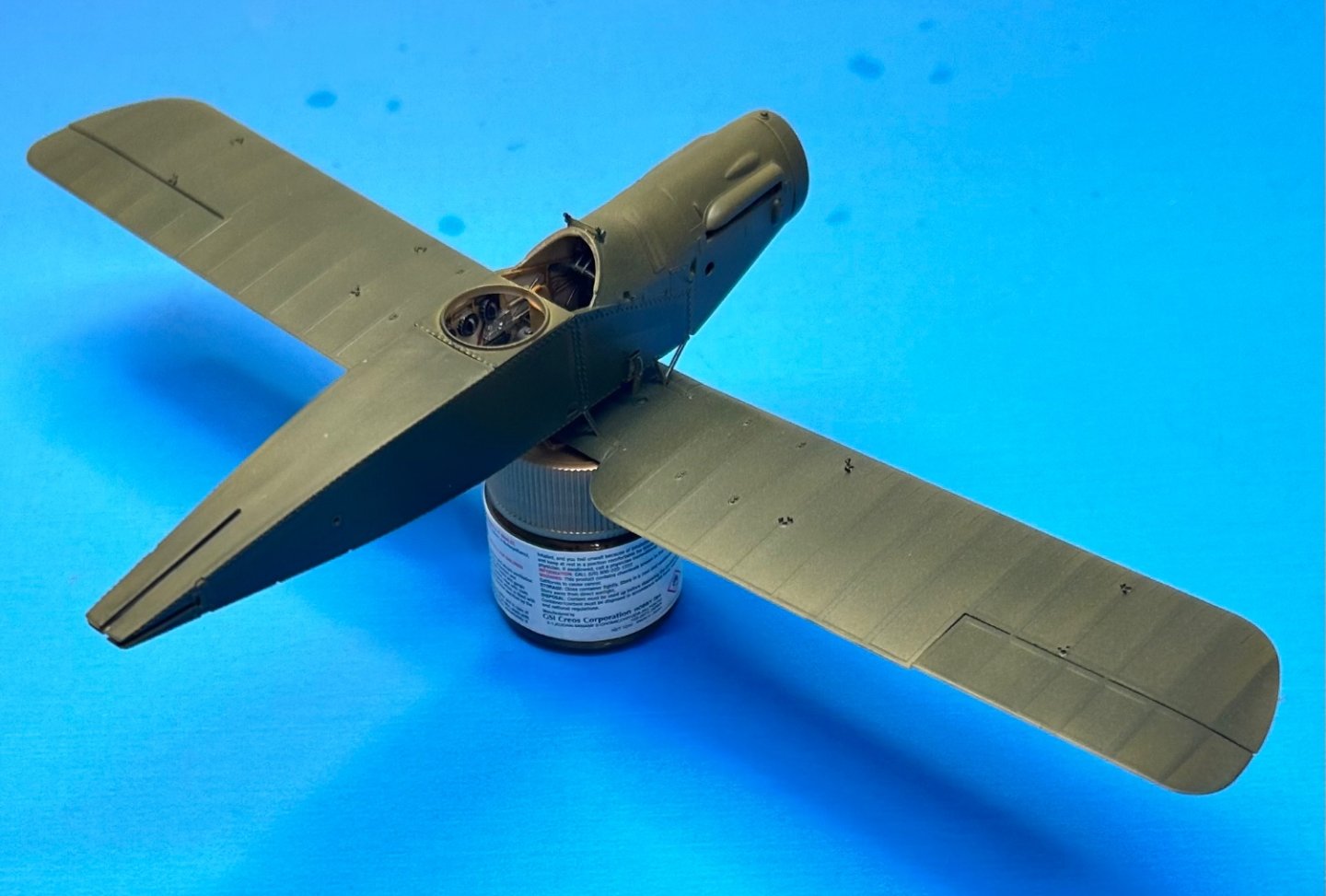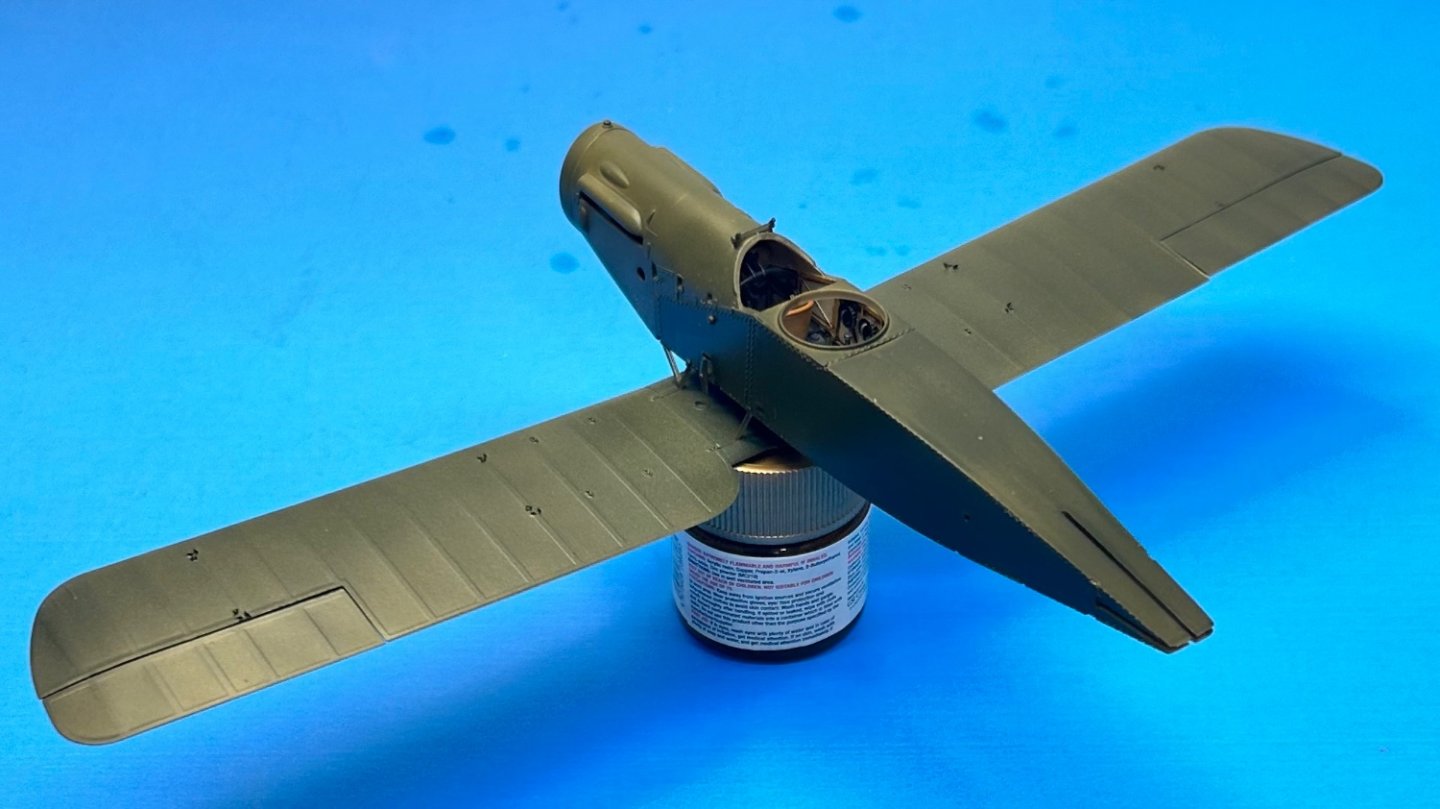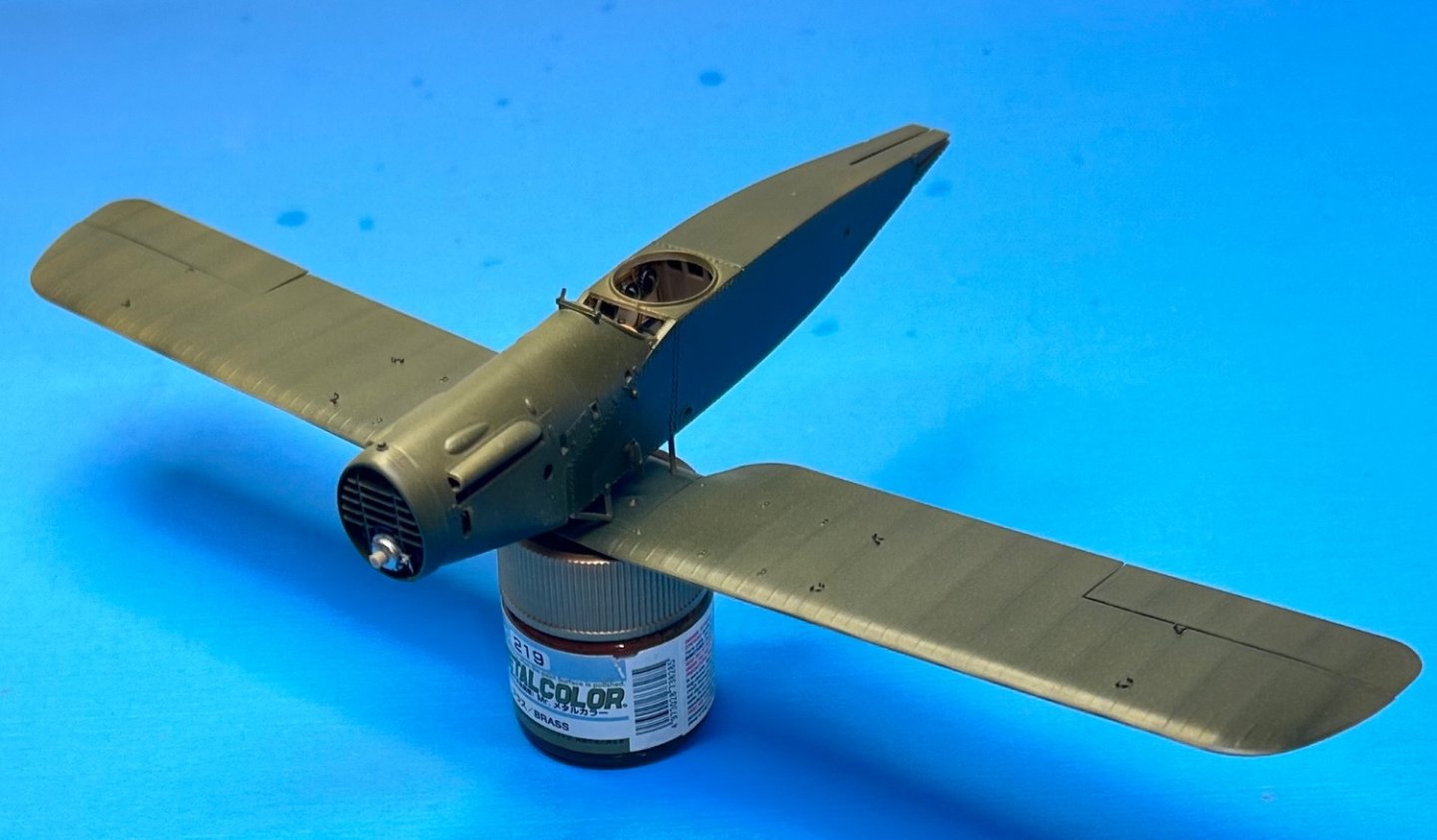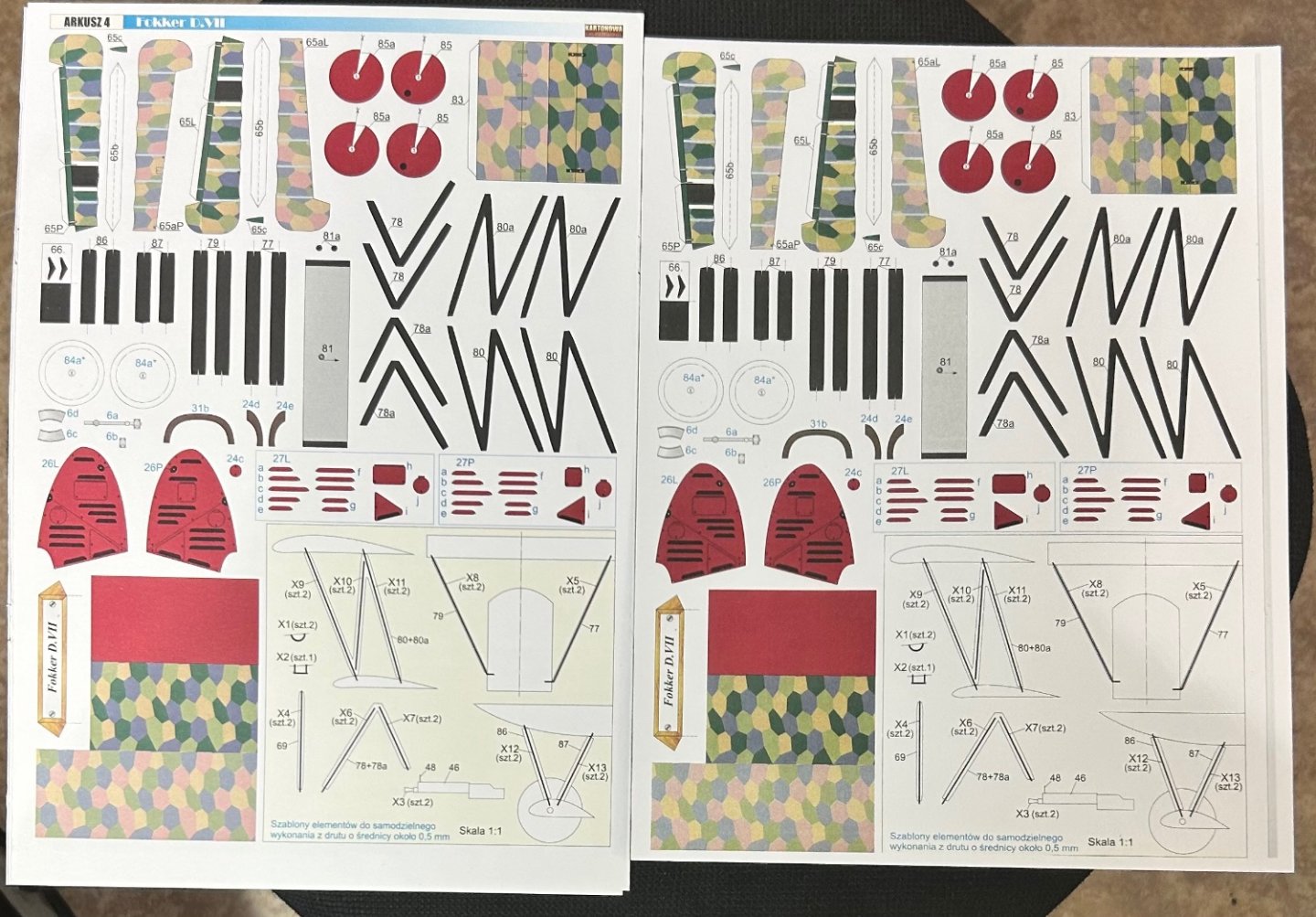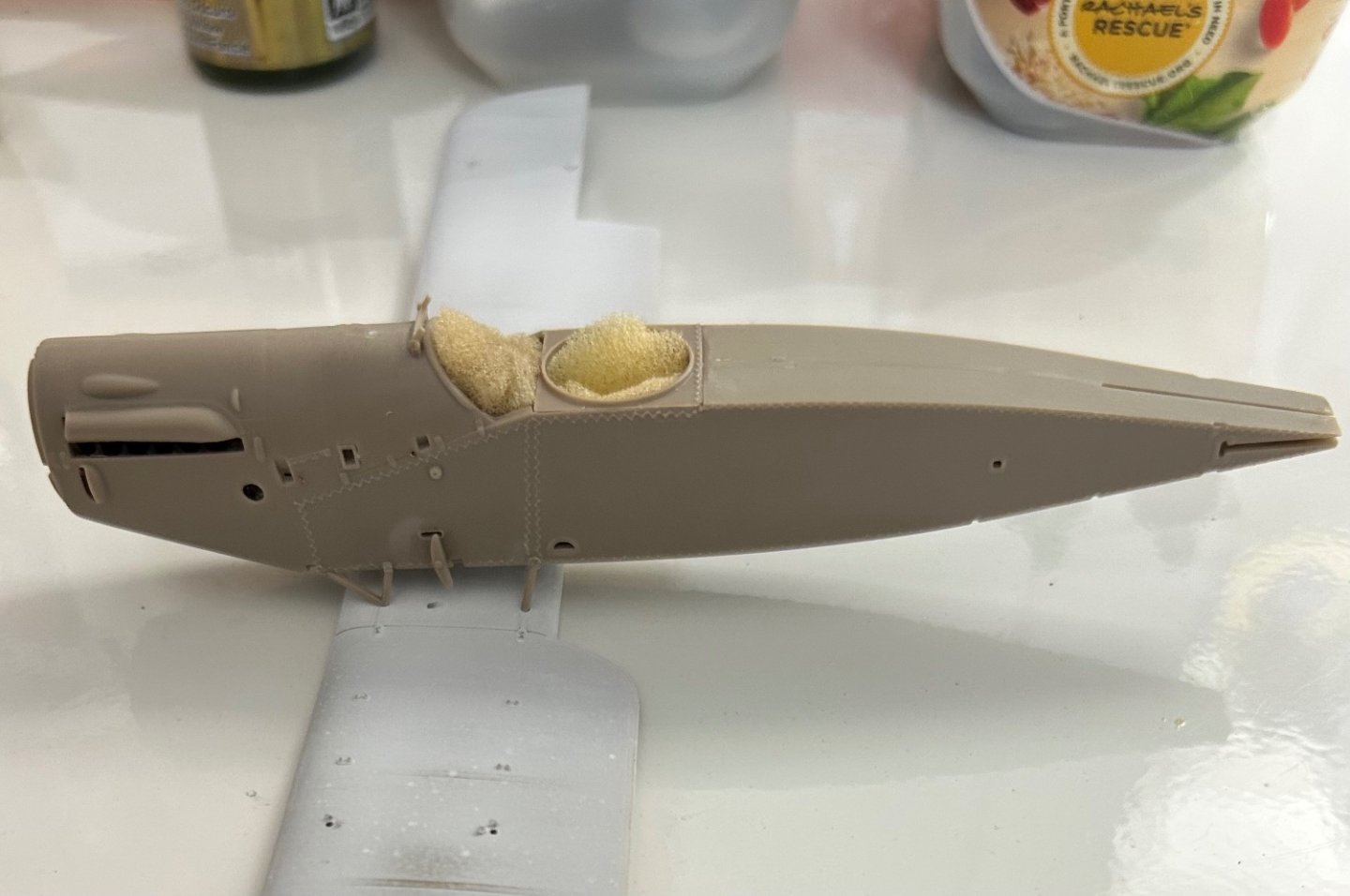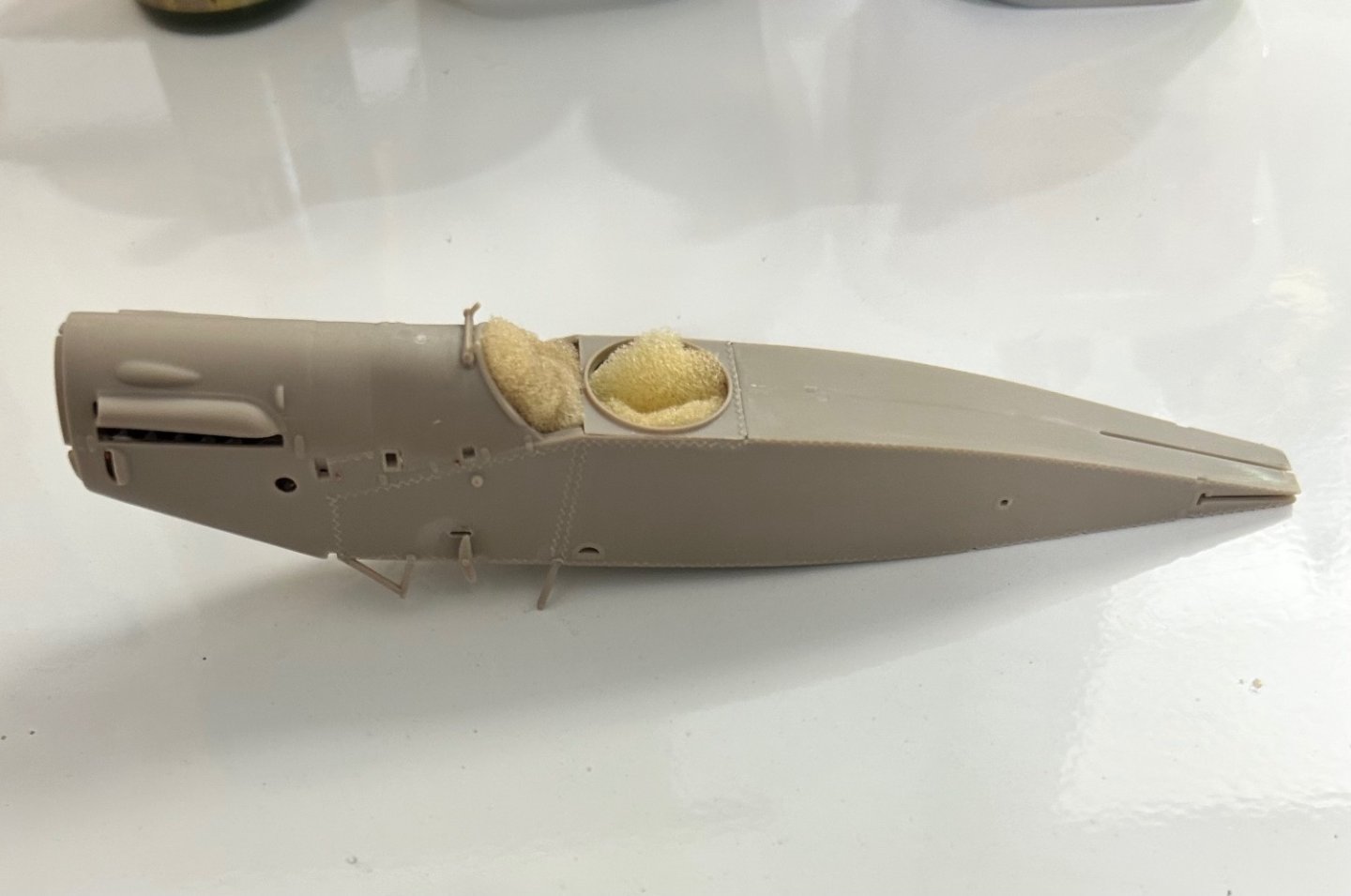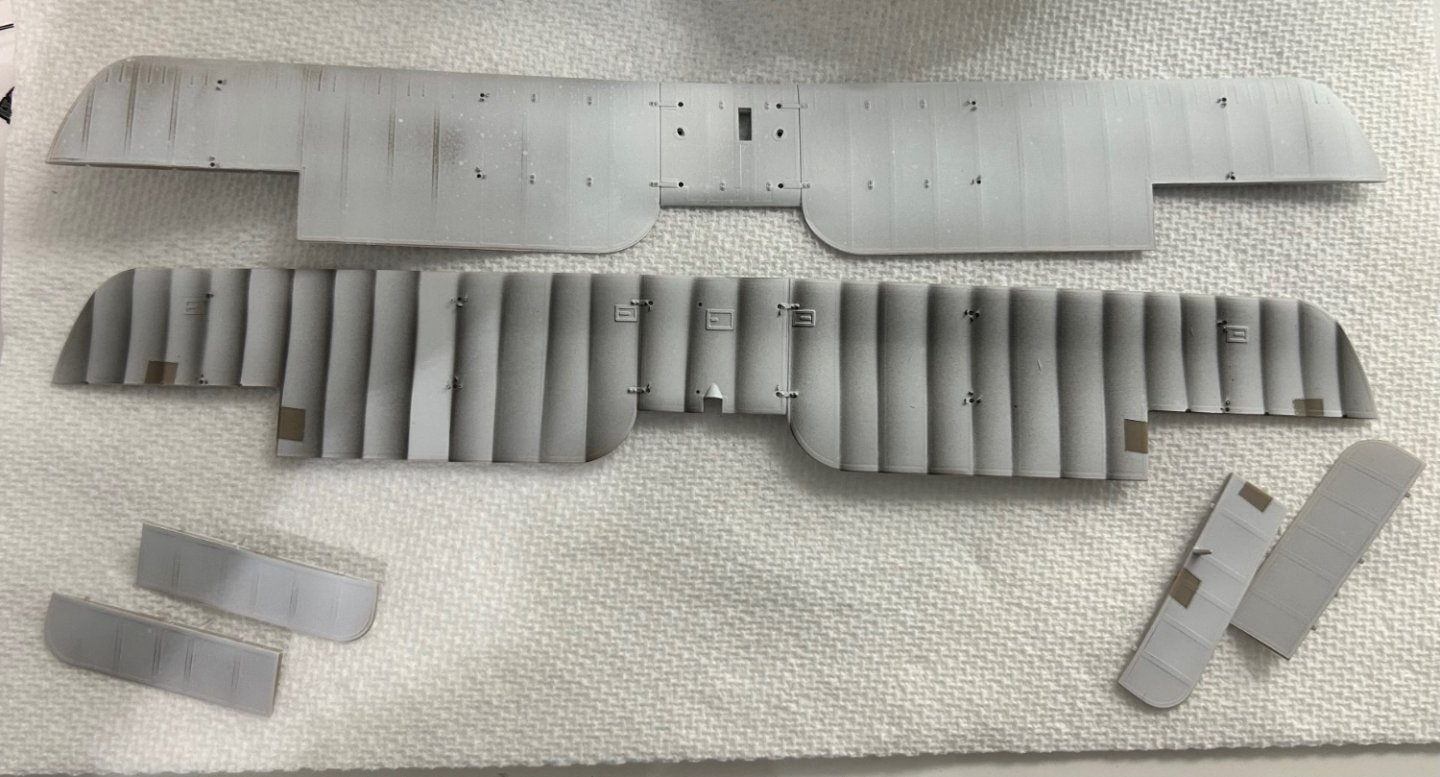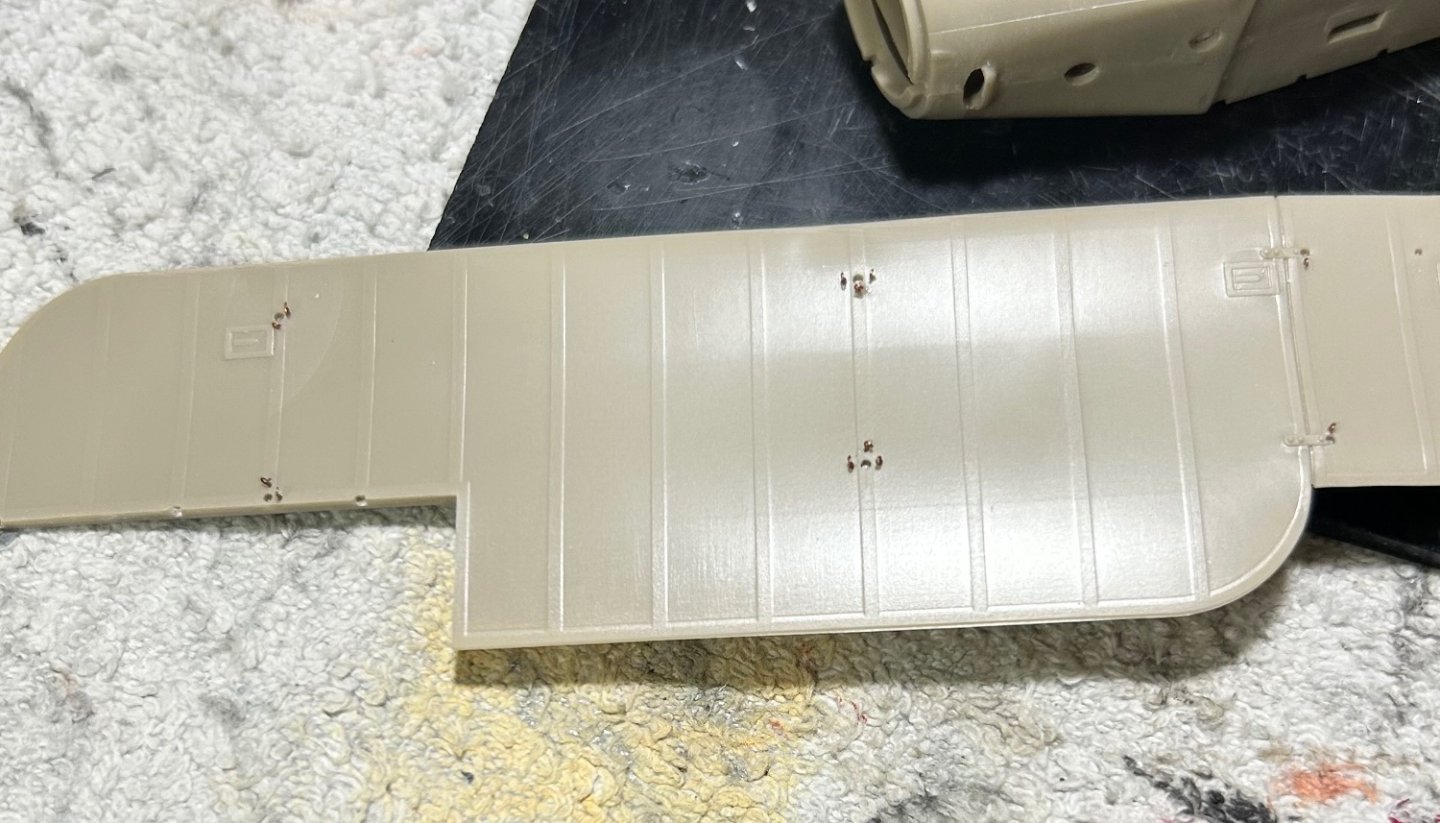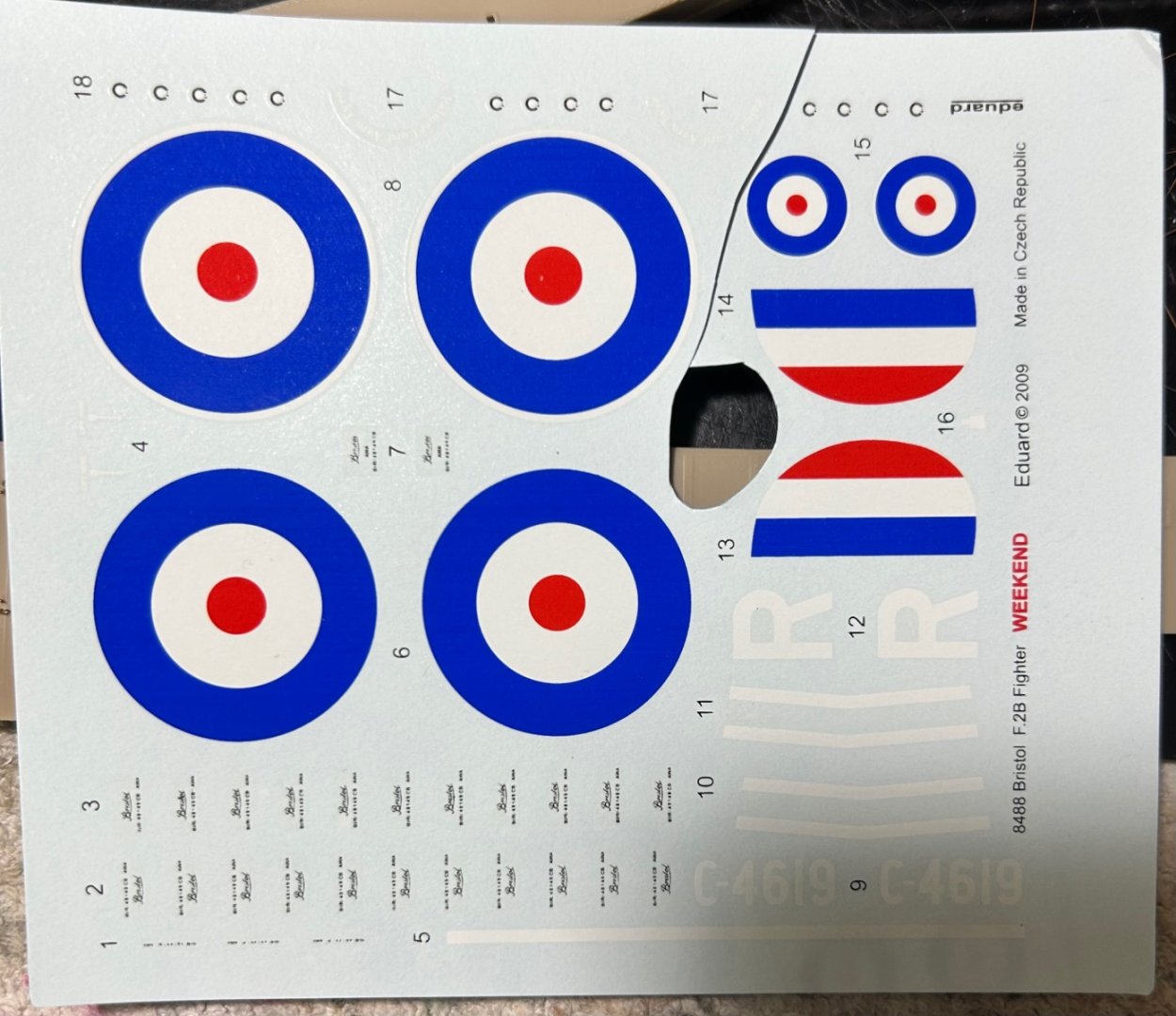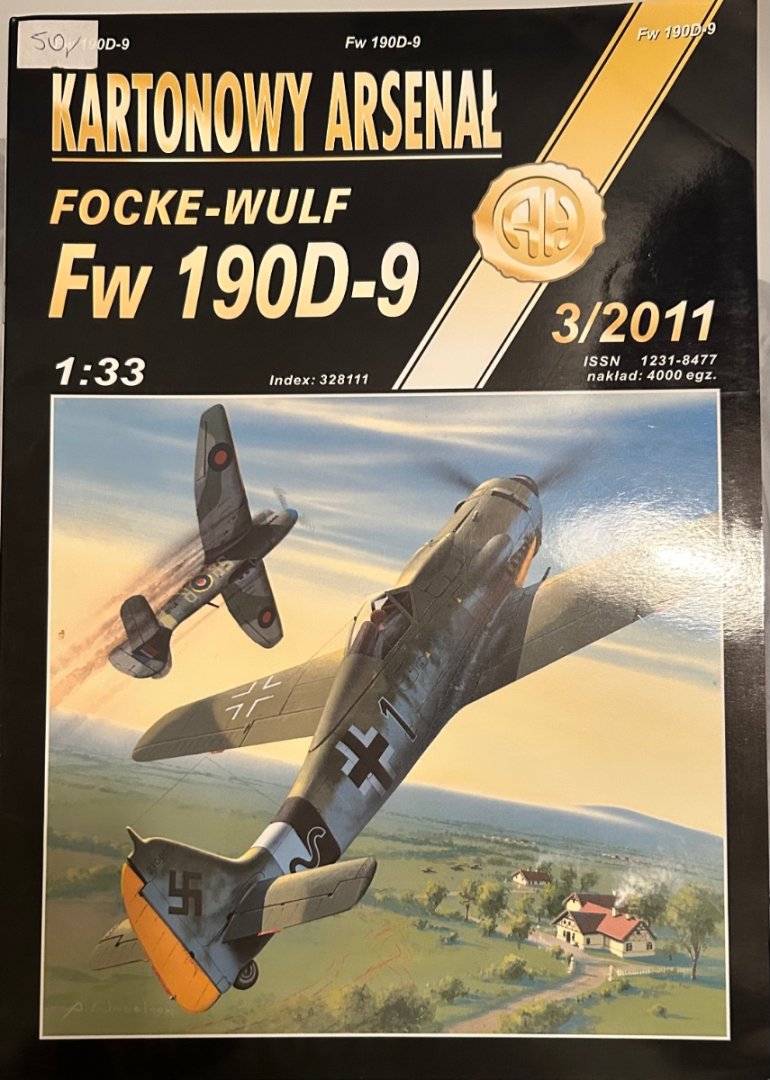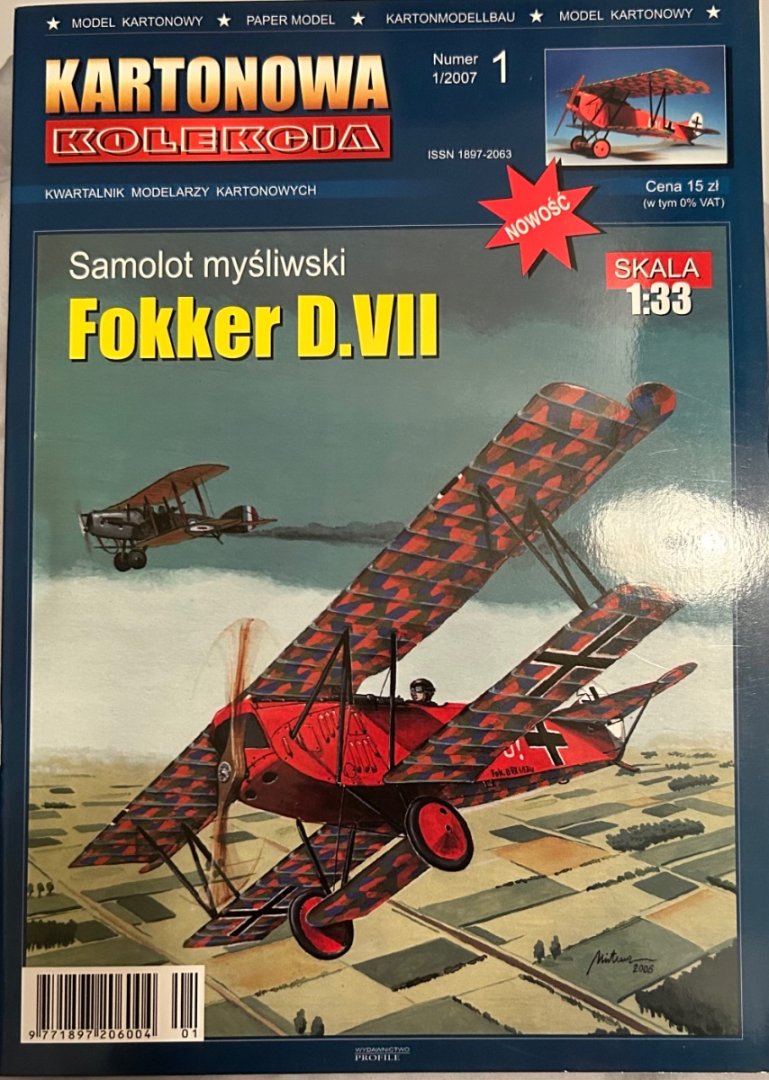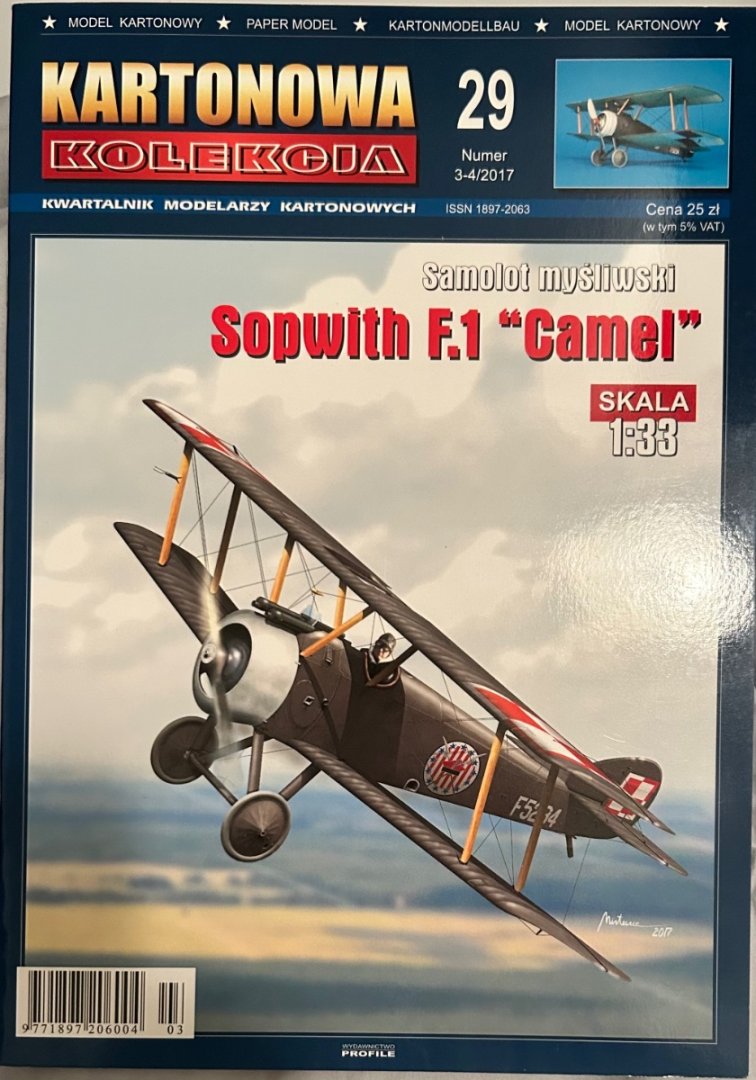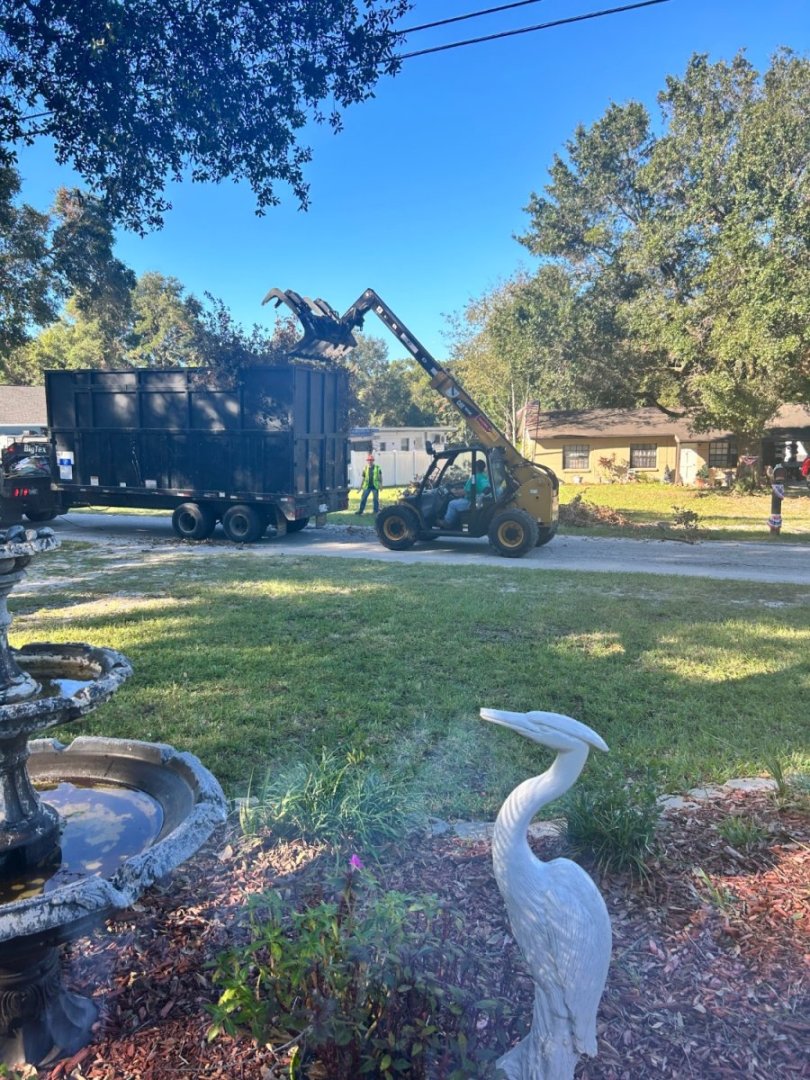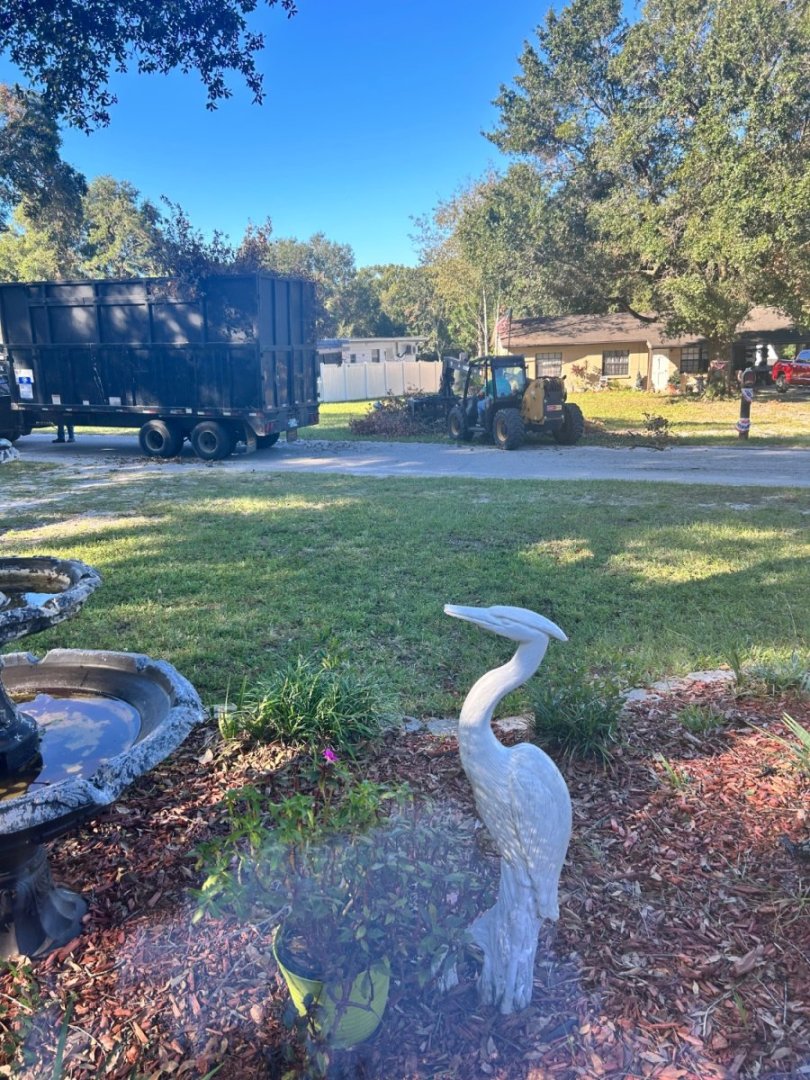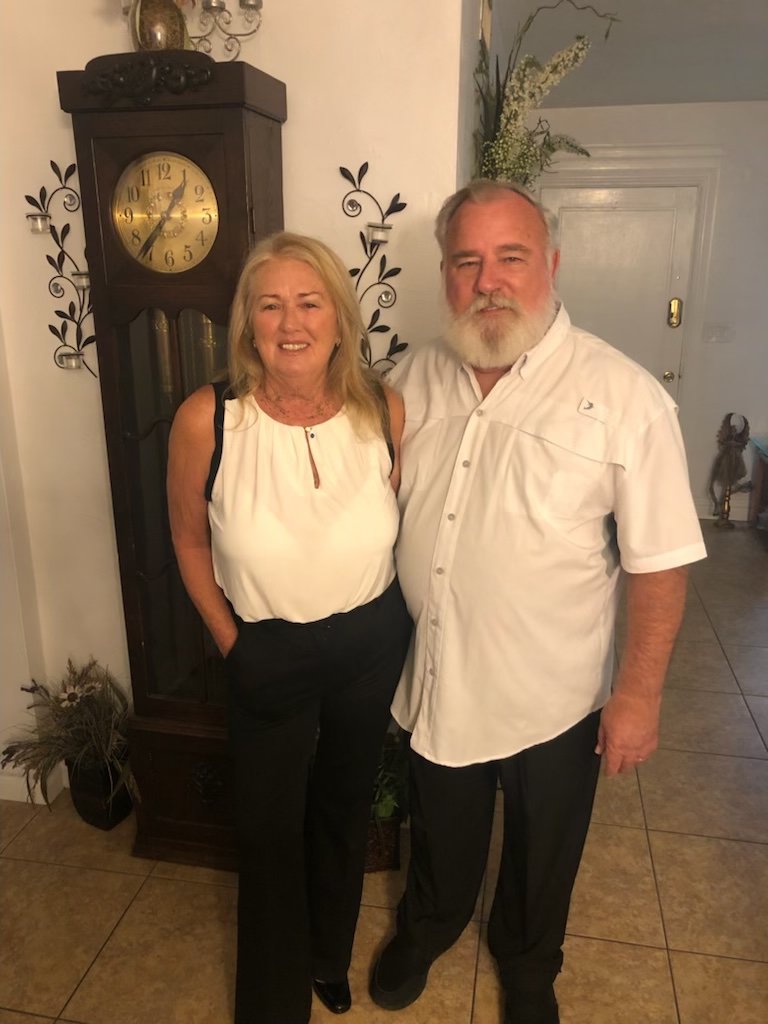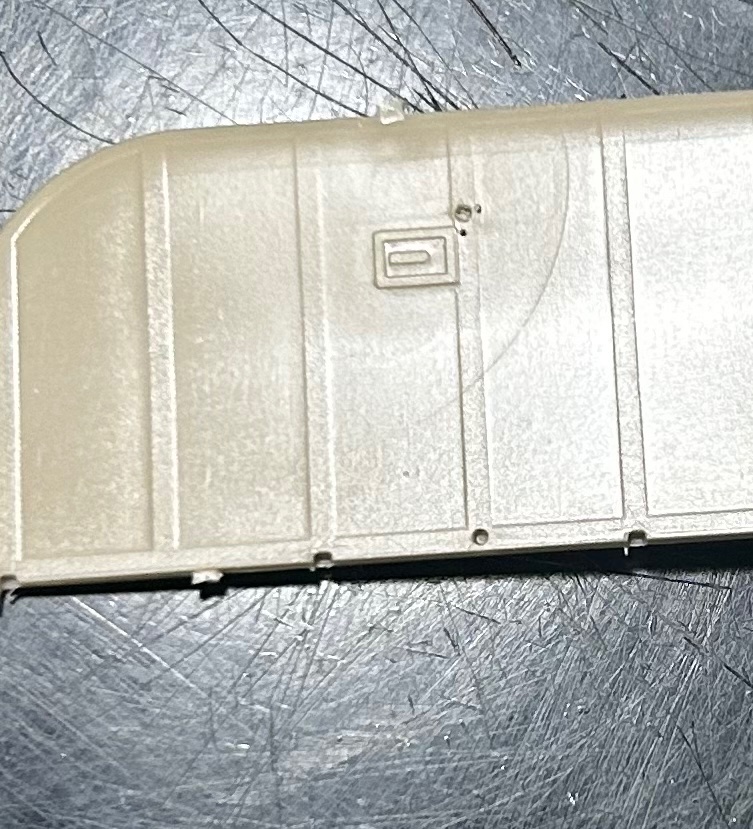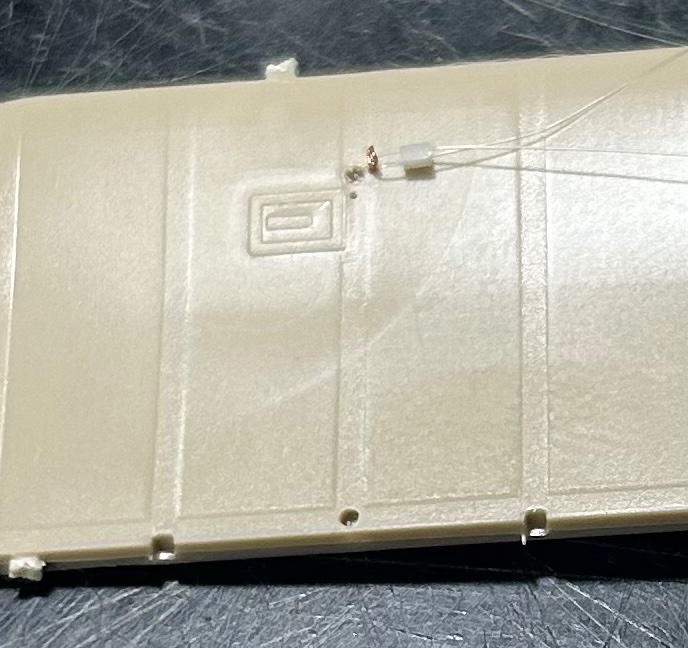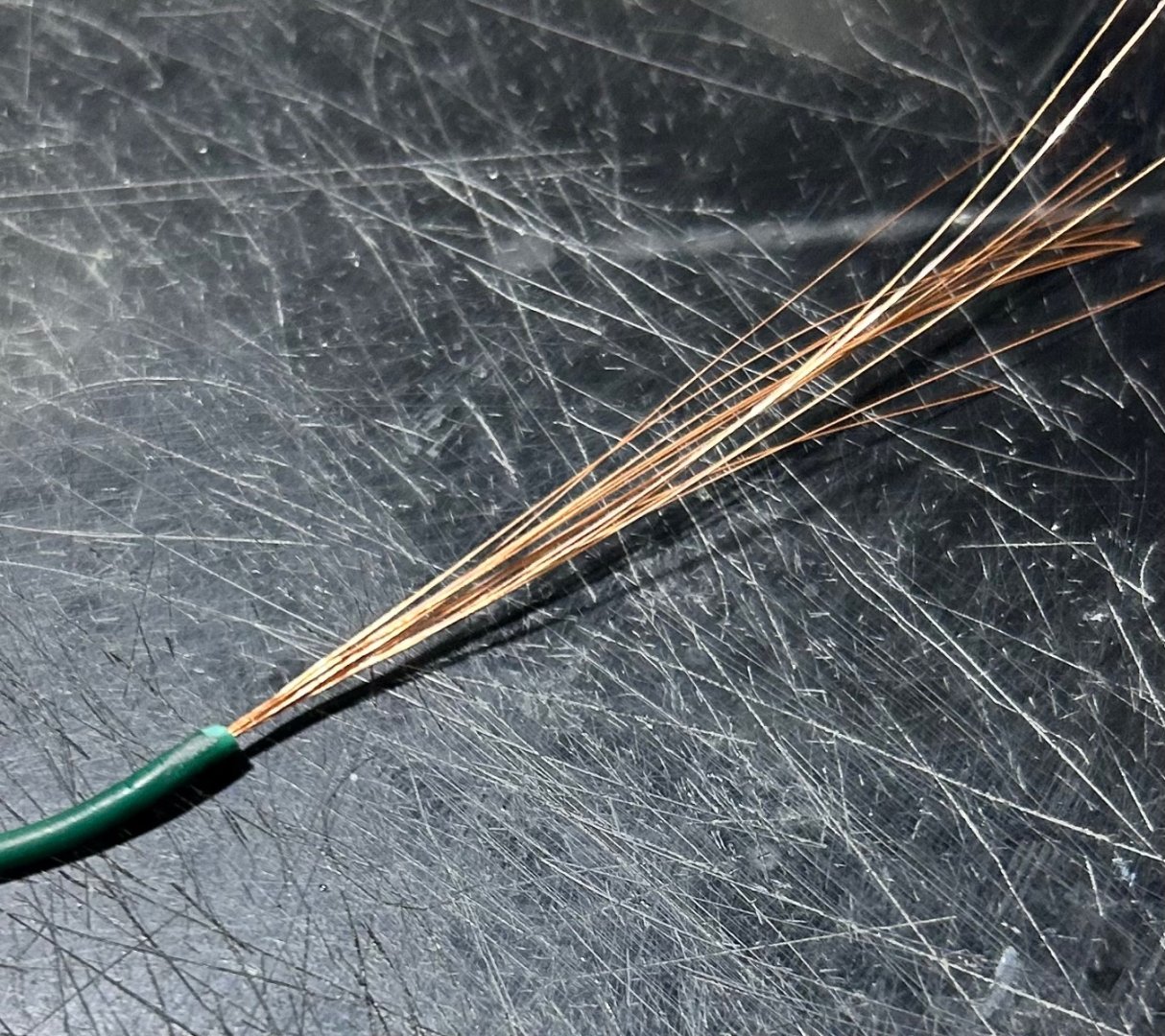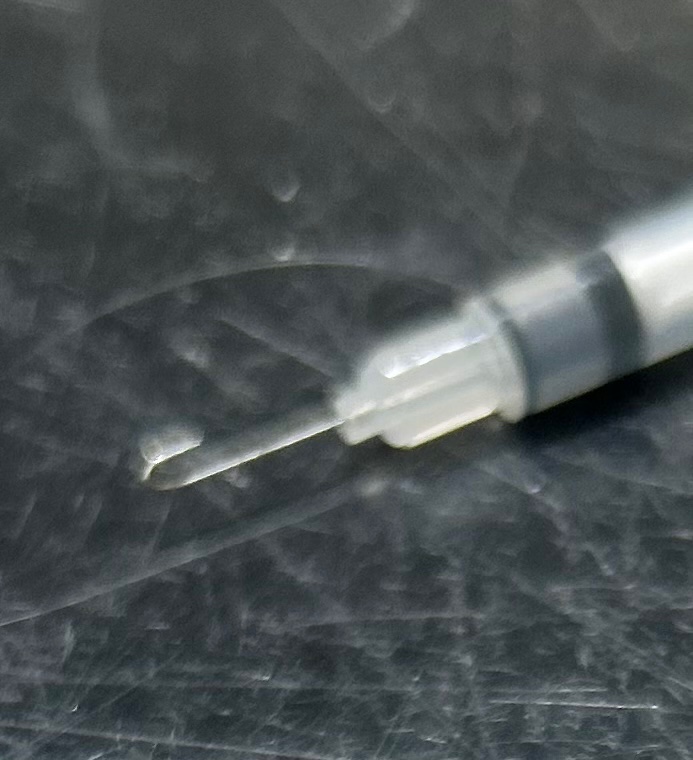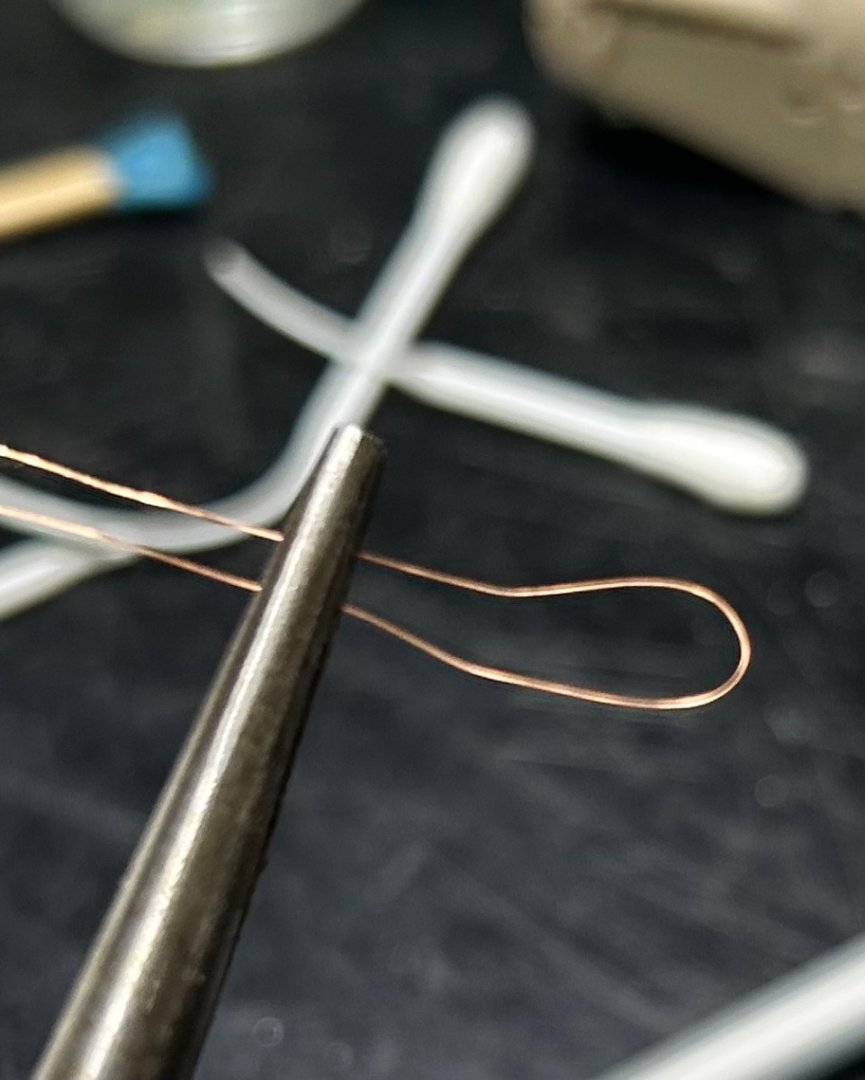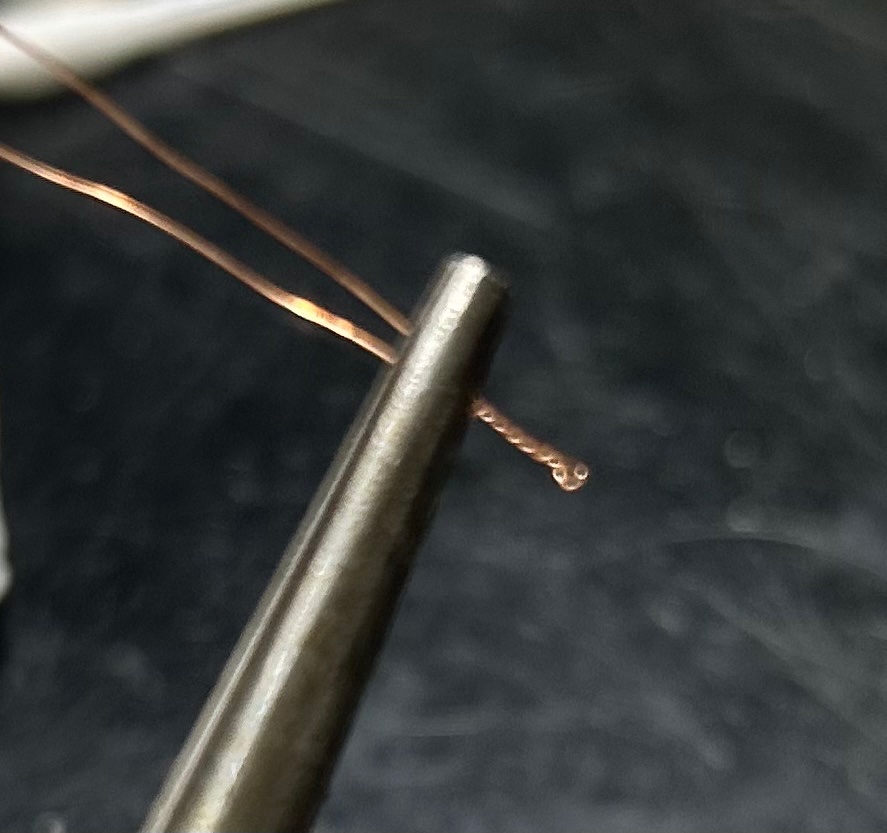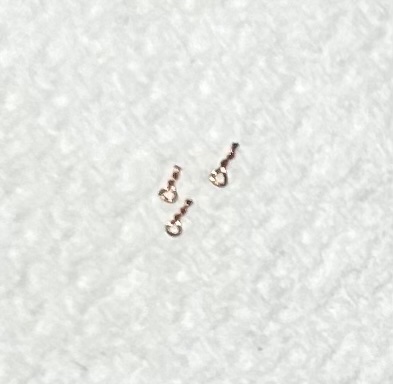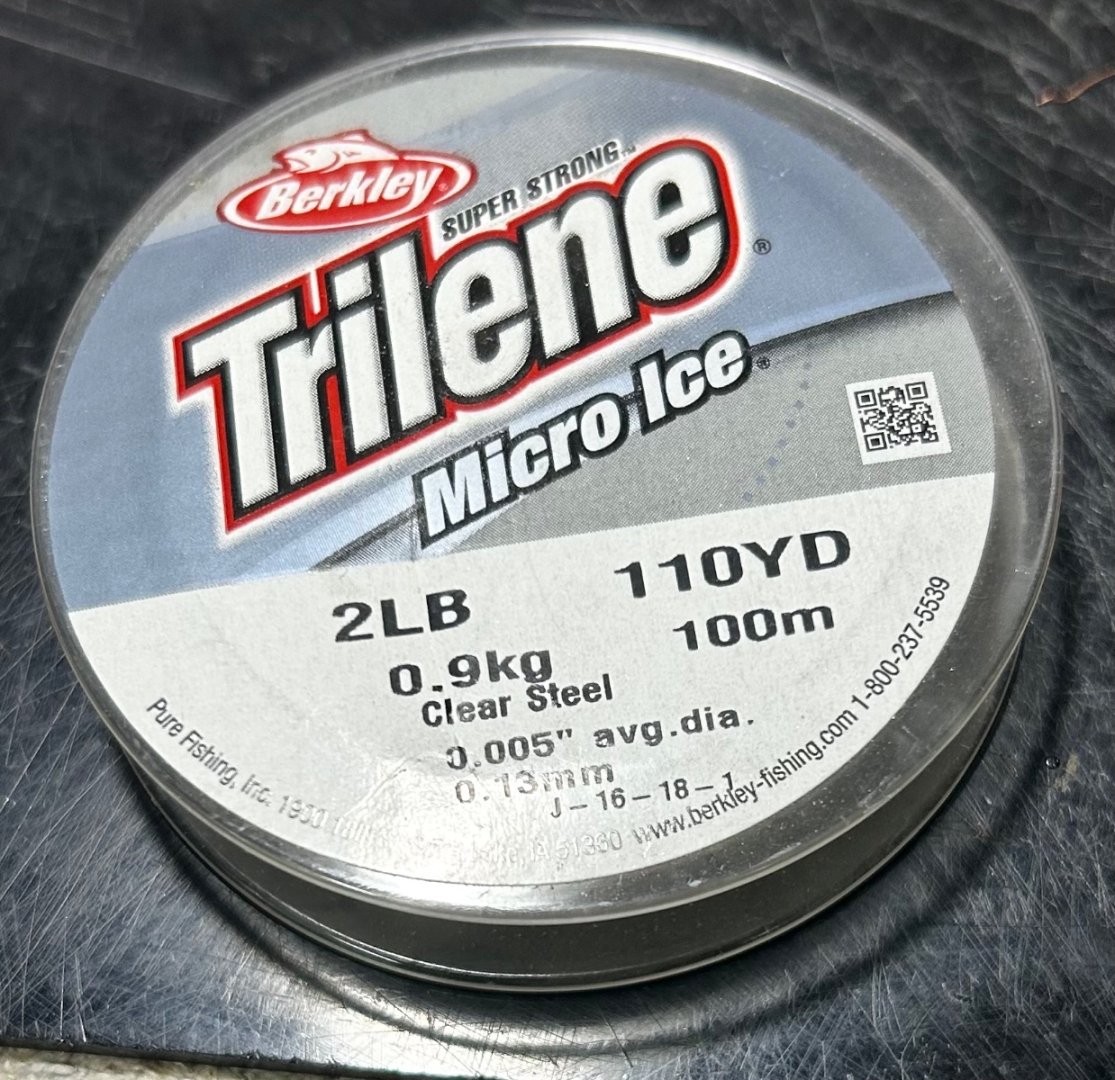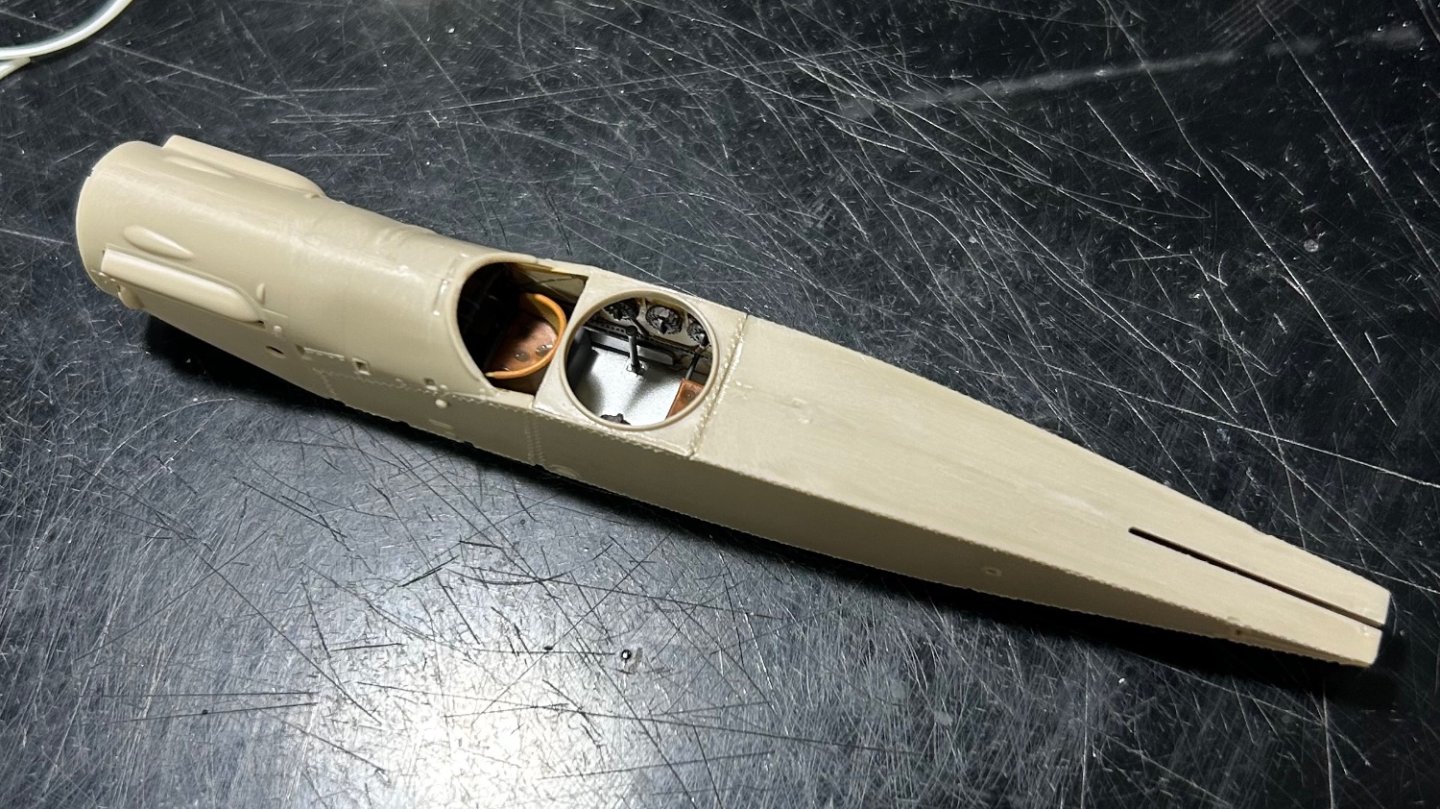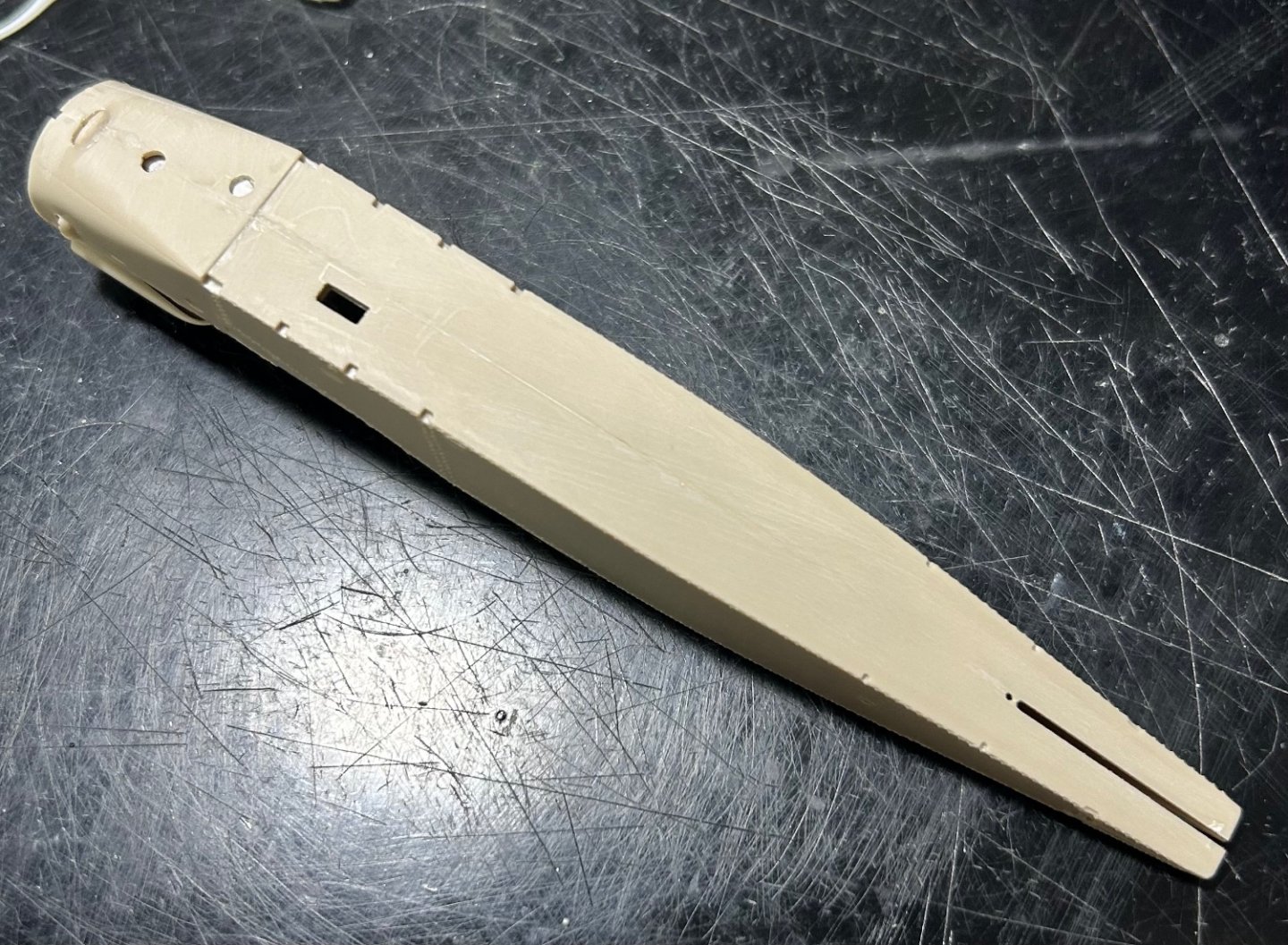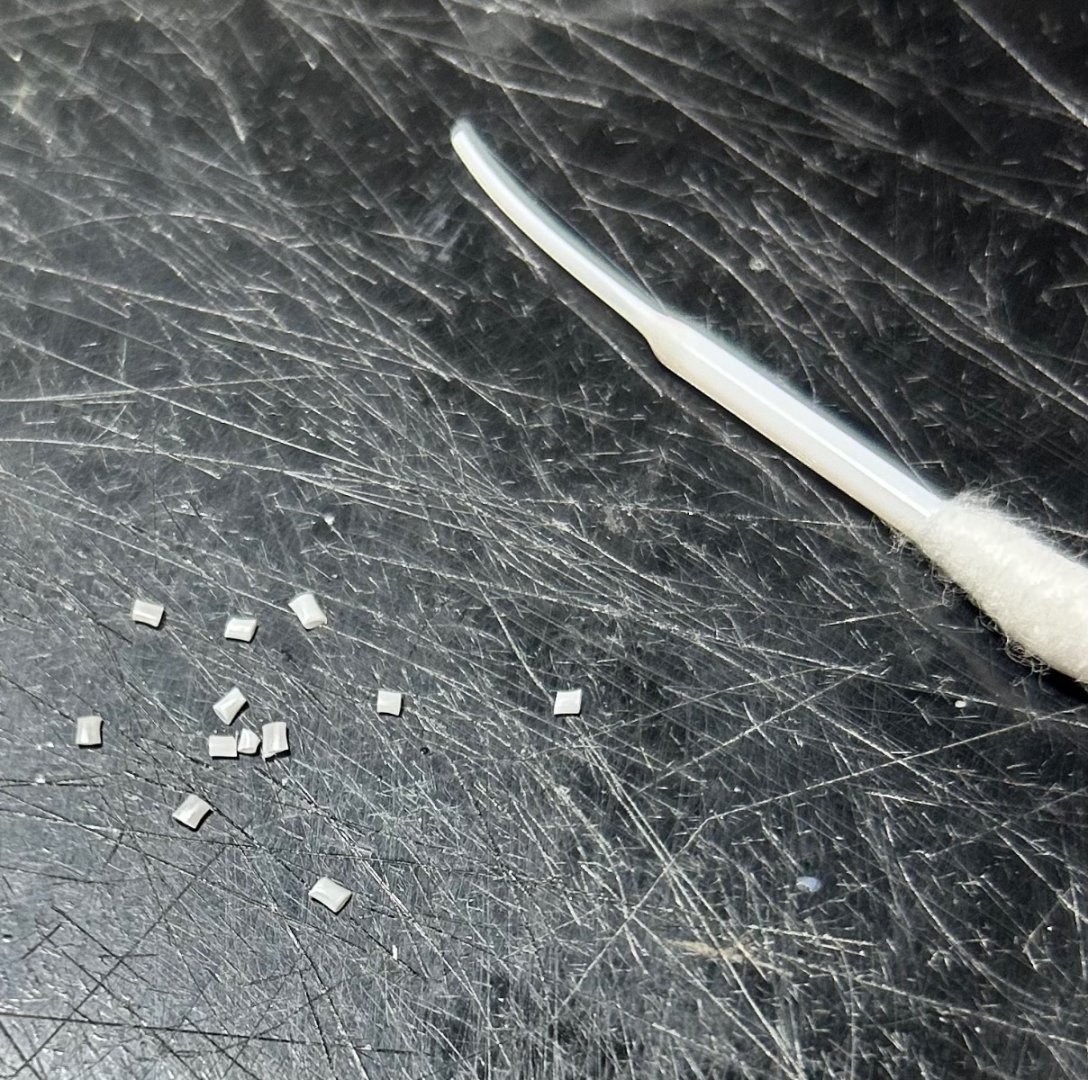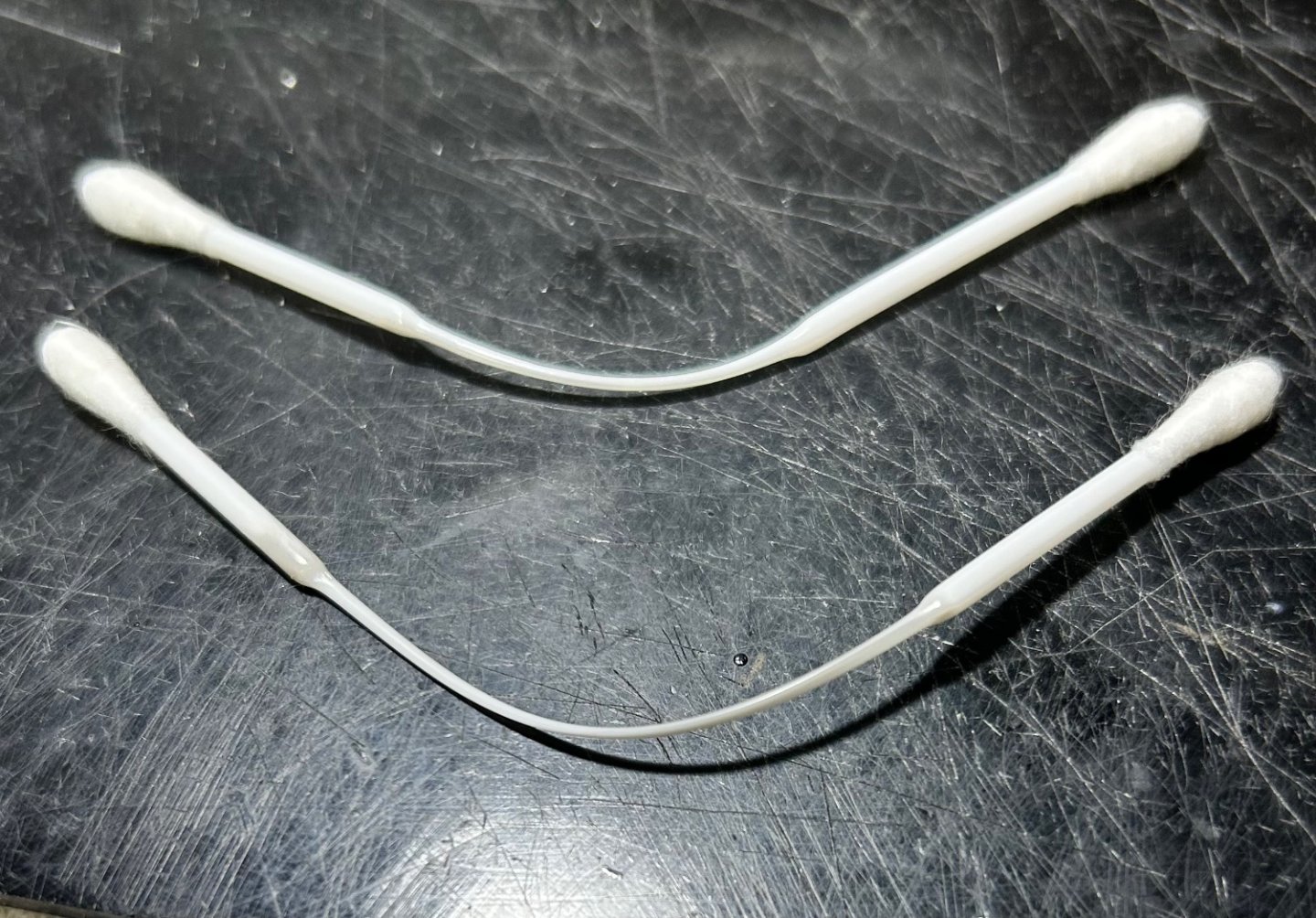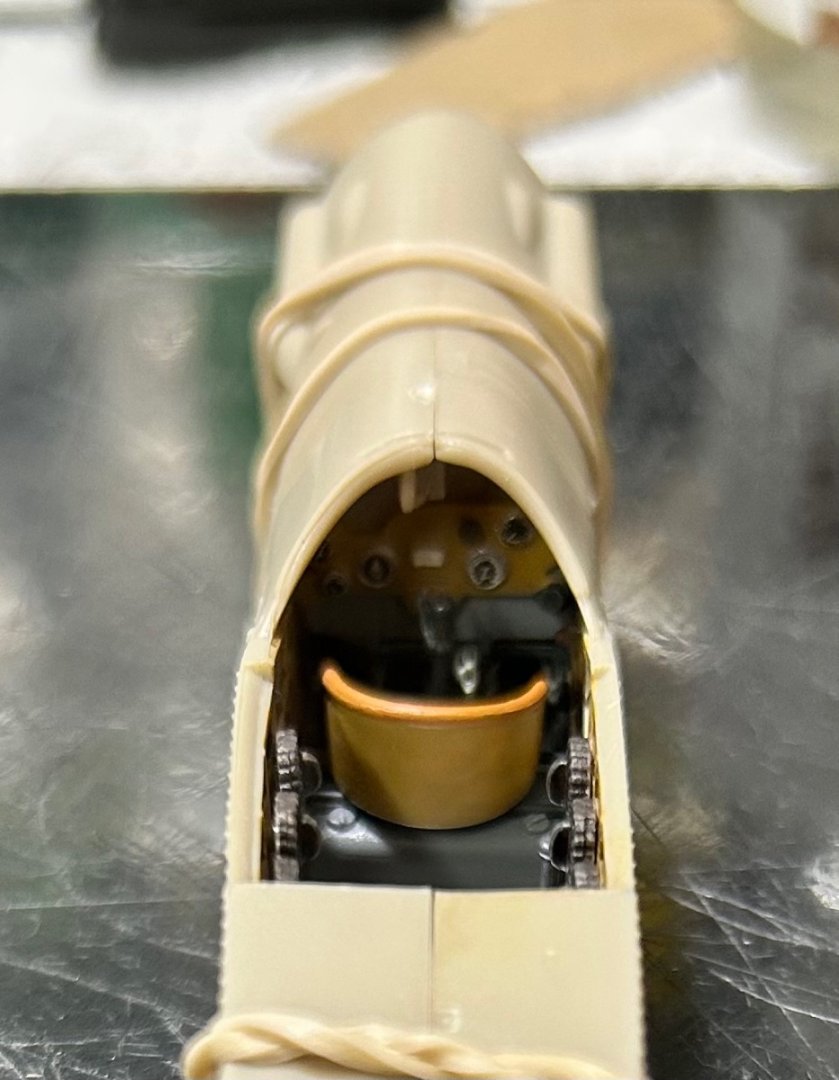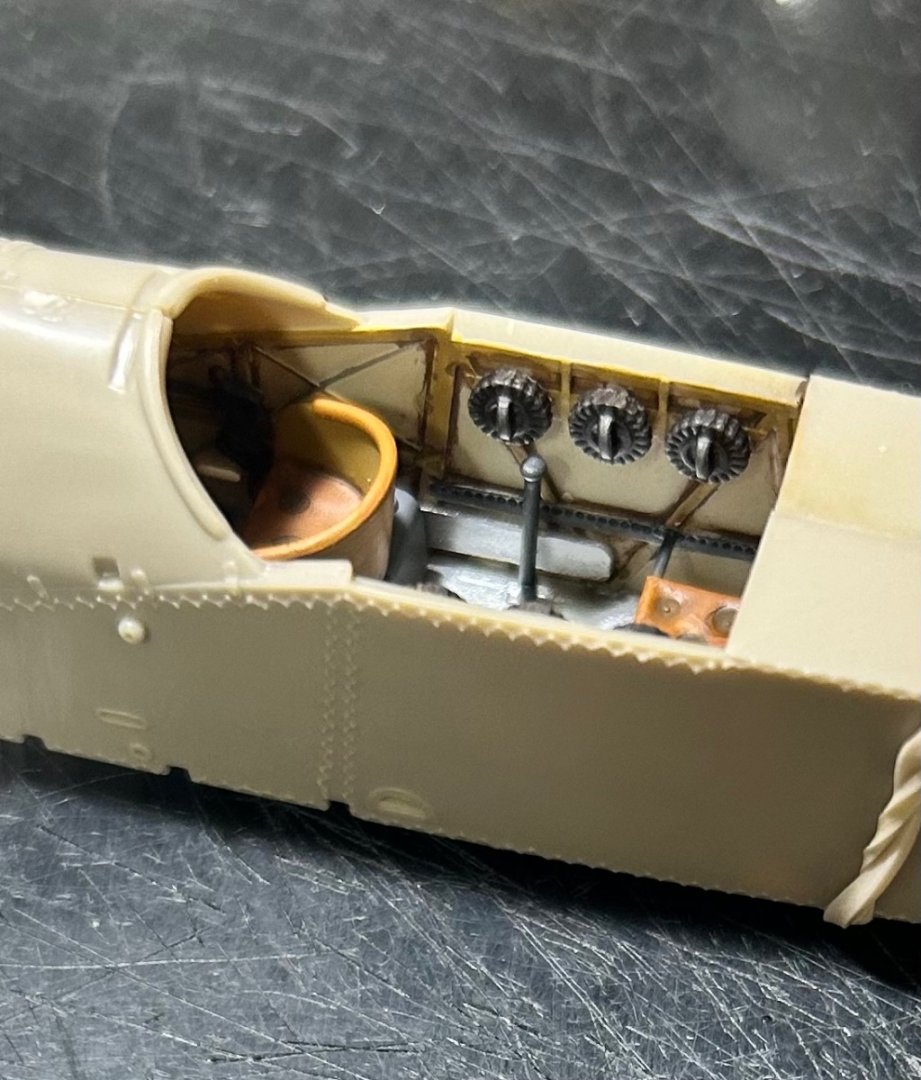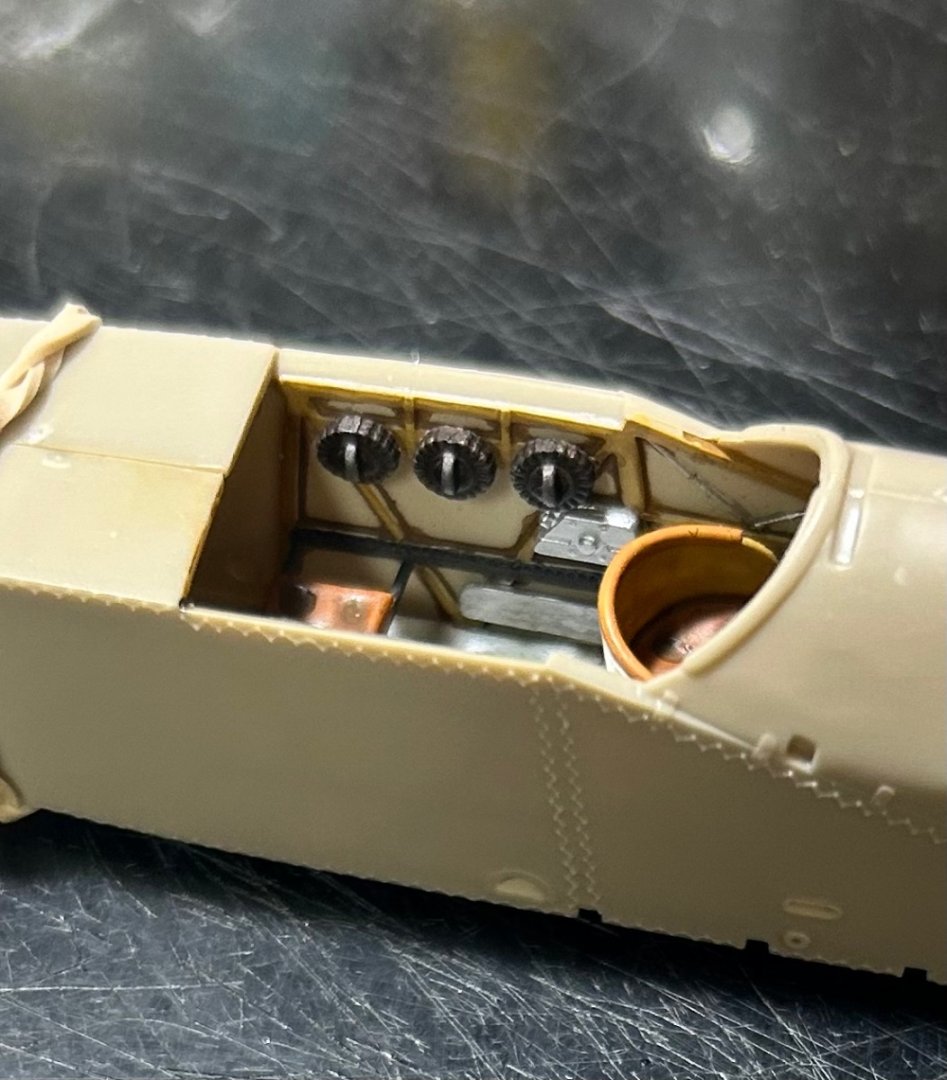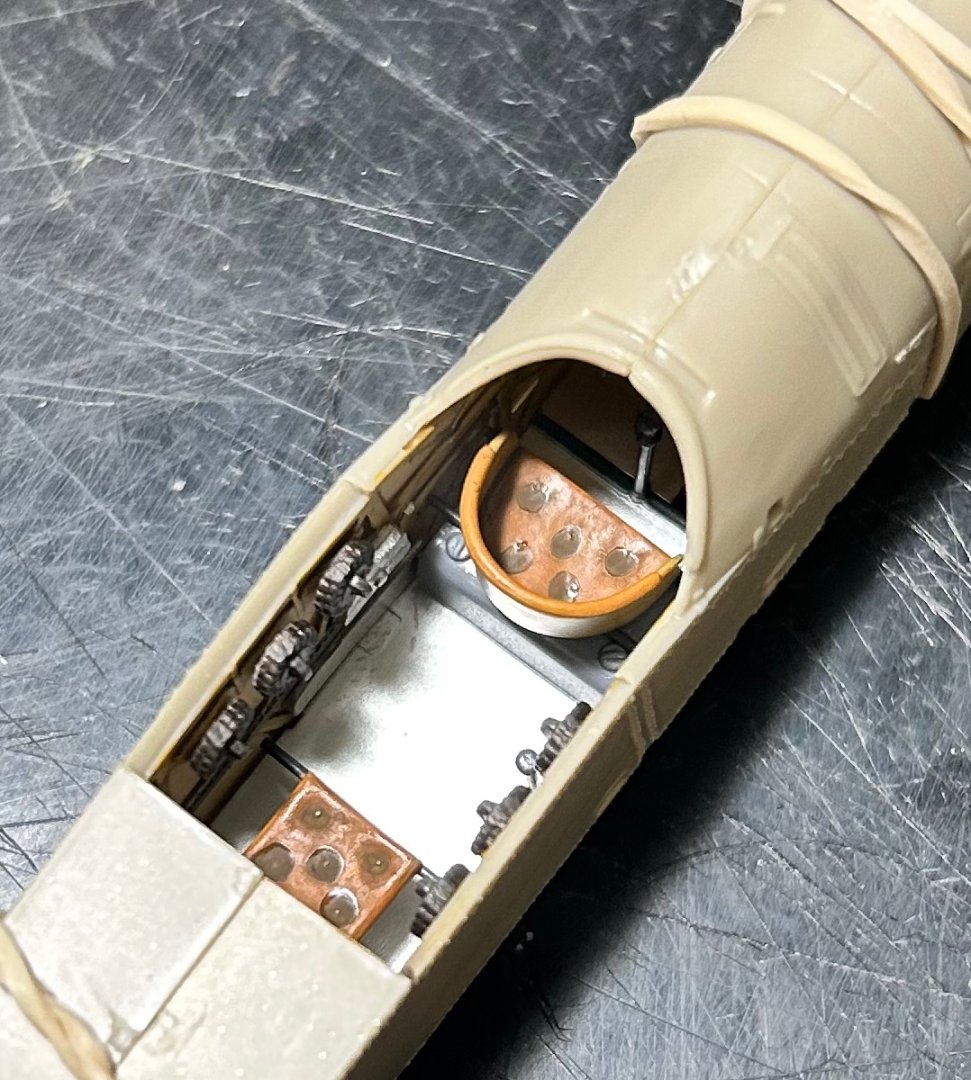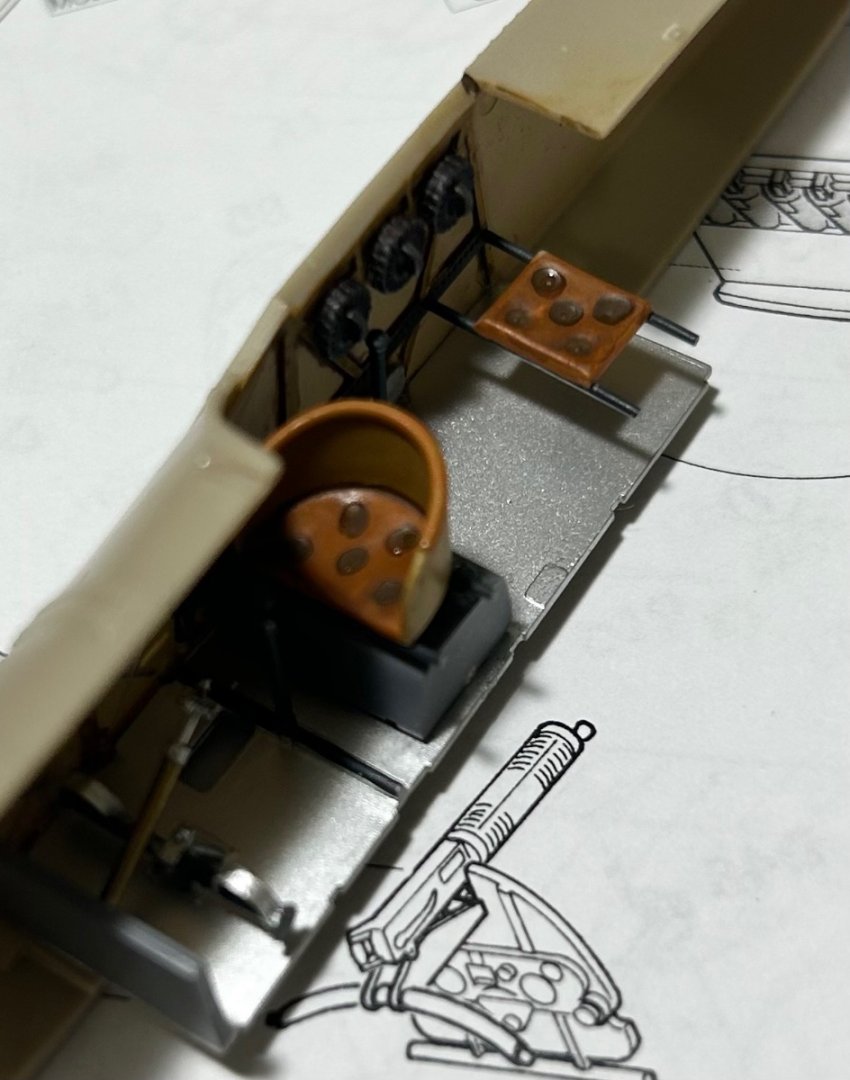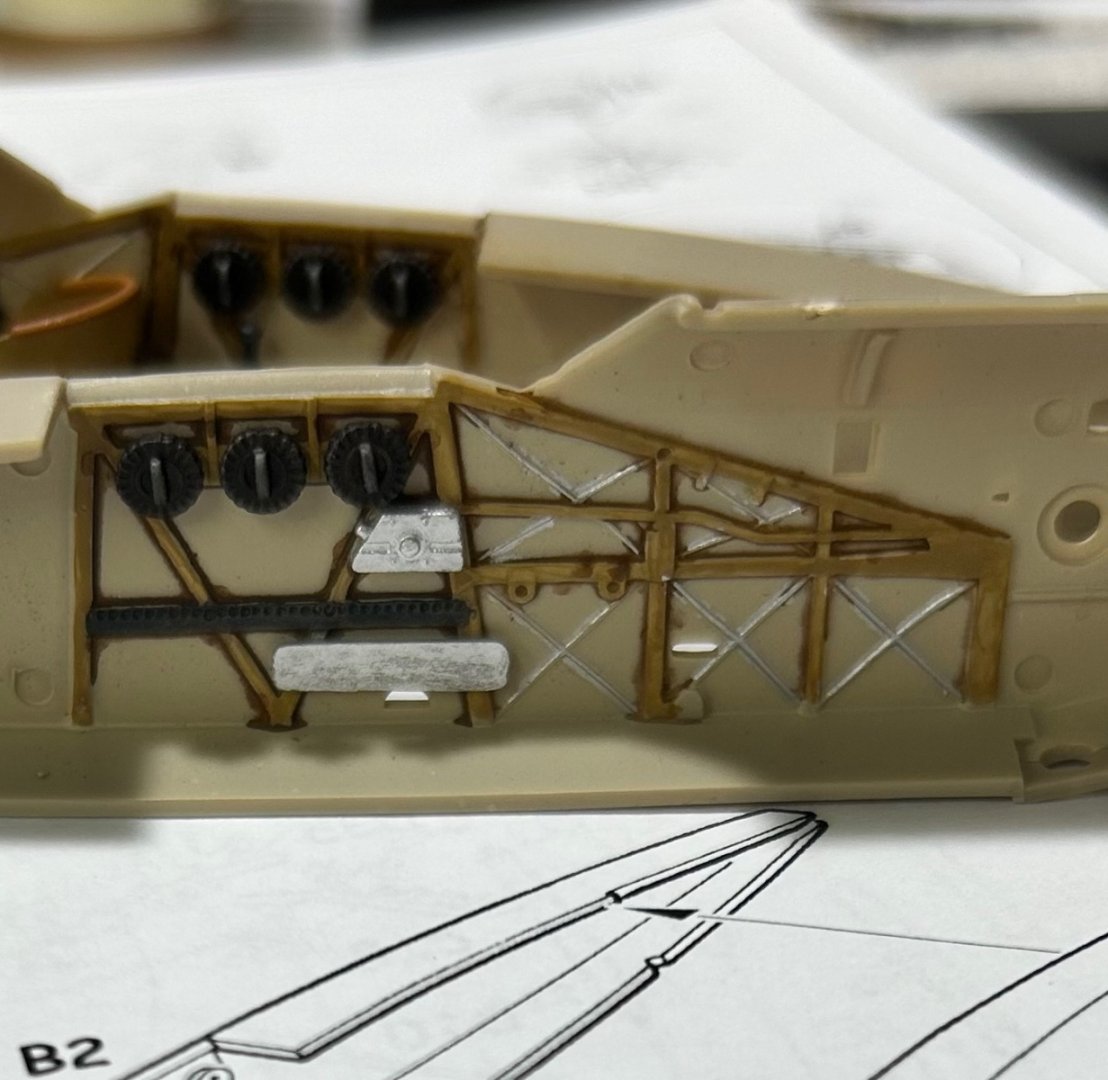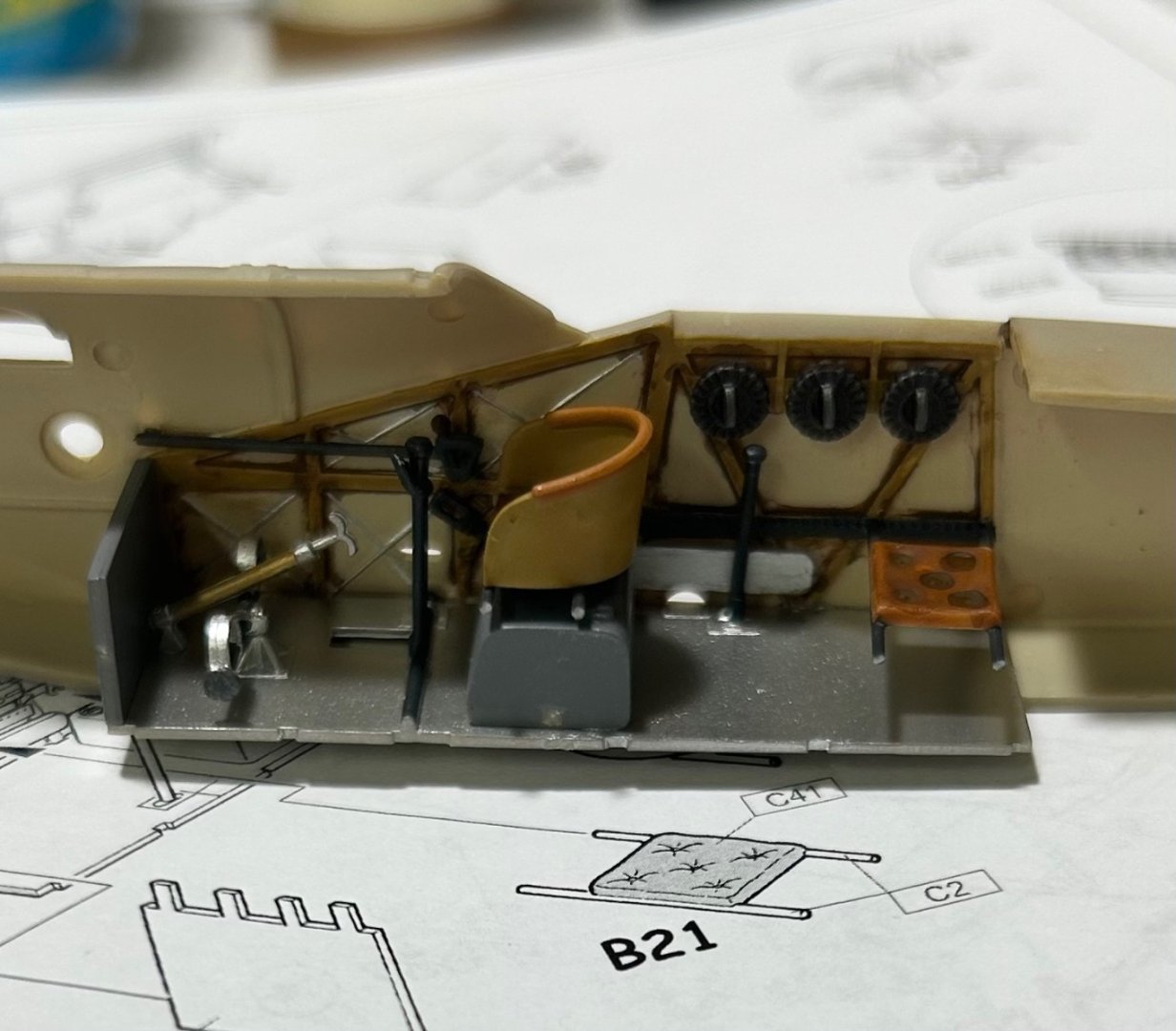-
Posts
7,737 -
Joined
-
Last visited
Content Type
Profiles
Forums
Gallery
Events
Everything posted by CDW
-

Bristol F.2B WW1 Fighter by CDW - FINISHED - Eduard - 1:48 Scale
CDW replied to CDW's topic in Non-ship/categorised builds
Here you can see the odd way the lower wing is mounted to the fuselage as well as how the landing gear struts pass through the wing to attach to the fuselage. -

Bristol F.2B WW1 Fighter by CDW - FINISHED - Eduard - 1:48 Scale
CDW replied to CDW's topic in Non-ship/categorised builds
Have a little paint on the major portion of the kit now. Will add more paint to the struts then will begin the assembly of the sub assemblies 😁 Mucho weathering and rigging to follow. -

On Hold - Nakajima Type KO 3 by CDW - Answer - 1:33 Scale - CARD
CDW replied to CDW's topic in Non-ship/categorised builds
I disassembled my three kit books and took the pages to Office Depot for copies on their laser color printer. I got one full size copy and one half size copy of each book for a grand total cost of $20 after tax. That’s a total of 24 pages on similar paper as the original. 4 of those pages were 11x17. Great quality as well as great price IMO. I won’t be cutting my original books any more from this point forward. Copies only. -

Bristol F.2B WW1 Fighter by CDW - FINISHED - Eduard - 1:48 Scale
CDW replied to CDW's topic in Non-ship/categorised builds
For any of you that own this kit or a variation of it from Eduard, be aware the instruction part number call outs for the fuselage - lower wing struts are backward. Test fit the strut fuselage to wing fit before gluing the parts to the fuselage. If you don’t do this, you will find out the hard way and likely need to scratch build another set of struts. -

Bristol F.2B WW1 Fighter by CDW - FINISHED - Eduard - 1:48 Scale
CDW replied to CDW's topic in Non-ship/categorised builds
Fuselage is ready for paint. The F.2B had a unique wing mounting system on the bottom wing. The wings have been primed in white while the rib locations are pre shaded n black before color coats. -

Churchill Mk.III tank by King Derelict - Italeri - 1/72
CDW replied to king derelict's topic in Non-ship/categorised builds
Nice haul! -

Bristol F.2B WW1 Fighter by CDW - FINISHED - Eduard - 1:48 Scale
CDW replied to CDW's topic in Non-ship/categorised builds
The upper and lower wings each have need of 20 tie-off points for rigging. The fuselage needs 6 points, 3 on each side. Next steps will include prepping and painting the wings. Will pre-shade the wings before color coats. I may paint the rounders depending on how the decals look. Eduardo usually have nice decals but we shall see. -

On Hold - Nakajima Type KO 3 by CDW - Answer - 1:33 Scale - CARD
CDW replied to CDW's topic in Non-ship/categorised builds
I received these in the mail today but won’t start them until I scan and reduce them to 1:72 scale first for printing. I have frames on order from Poland. -

On Hold - Nakajima Type KO 3 by CDW - Answer - 1:33 Scale - CARD
CDW replied to CDW's topic in Non-ship/categorised builds
Chris I found this fellow's paper modeling channel. Builds some very nice models in 1:72 scale after he scaled them down from 1:33 kits. I like the channel and am learning a lot from watching his videos. -

On Hold - Nakajima Type KO 3 by CDW - Answer - 1:33 Scale - CARD
CDW replied to CDW's topic in Non-ship/categorised builds
Been doing a bit of research and homework on card modeling before I make another attempt at it, albeit this kit is toast I do have others waiting on the wings (no pun intended). One lesson learned is how easy it is to screw up a part or even a whole parts page. What I would like to do is scan my kit then scale it down from 1:33 to 1:48 or 1:72. Question is, what’s the best home printer to use for a good quality color print? Is it a better idea to just have it color printed by a commercial printing service? I don’t think my ink jet printer is up to the task of a good quality print. -
Airbrush clogs most usually come down to the ratio/mix of paint to thinner. With acrylic paints, a flow improver additive is sometimes needed to stop needle tip drying. Play with your mix ratios on scrap until you find the correct mix. It's a problem that happens to all of us, particularly when you go from one brand of paint to another because each have their own peculiar quirks it seems to me.
-

Bristol F.2B WW1 Fighter by CDW - FINISHED - Eduard - 1:48 Scale
CDW replied to CDW's topic in Non-ship/categorised builds
Just this morning debris contractors began collecting debris created as a result of Hurricane Ian on our street. Our damage was next to nothing compared to counties south of us. It will take years, maybe decades for them to recover. -

Churchill Mk.III tank by King Derelict - Italeri - 1/72
CDW replied to king derelict's topic in Non-ship/categorised builds
Indeed, that Camo is super Alan. Very nice. -

Bristol F.2B WW1 Fighter by CDW - FINISHED - Eduard - 1:48 Scale
CDW replied to CDW's topic in Non-ship/categorised builds
-

Bristol F.2B WW1 Fighter by CDW - FINISHED - Eduard - 1:48 Scale
CDW replied to CDW's topic in Non-ship/categorised builds
Two attachment points will be made adjacent to each wing strut. I’ve drilled .25mm holes at each point being careful not to drill through the wing but enough to enable our twisted wire attachment points to be super glued to the wing. Now the little plastic sleeves made earlier come into play. Slide the monofilament rigging wire through a sleeve, then slide the rigging wire through the attachment point loop. Bring the wire back through the sleeve then super glue the sleeve to the wire…attachment complete. I find this method much simpler and cleaner than trying to knot the wire at the attachment point. Plus it looks pretty good after the assembly is all finished. -

Bristol F.2B WW1 Fighter by CDW - FINISHED - Eduard - 1:48 Scale
CDW replied to CDW's topic in Non-ship/categorised builds
I create my attachment points by first stripping the insulation from fine gauge electrical wire. Then using individual strands of wire, twist them into loops as per the photos. On this model, I will need a couple dozen attachment points. I made a tool to twist the loops by bending the needle of a hypodermic syringe. The wire is too fine to do it by hand. Need a tool like this one or similar to do it. -

Bristol F.2B WW1 Fighter by CDW - FINISHED - Eduard - 1:48 Scale
CDW replied to CDW's topic in Non-ship/categorised builds
For my rigging, I will be using 2 pound test monofilament fishing line. It’s almost hair-like in diameter. -

Bristol F.2B WW1 Fighter by CDW - FINISHED - Eduard - 1:48 Scale
CDW replied to CDW's topic in Non-ship/categorised builds
The fit of the fuselage halves was pretty good. After some sanding of the seams, adding super glue as a seam filler then sanding some more, the seams have virtually disappeared. -

Bristol F.2B WW1 Fighter by CDW - FINISHED - Eduard - 1:48 Scale
CDW replied to CDW's topic in Non-ship/categorised builds
Not ready for rigging at this time, but to prepare for it, find some cheap cotton swabs with plastic sticks. Paper sticks won’t work for this exercise. The plastic sticks are tubes. Slowly heat the plastic stick over a lit candle until it’s soft, then stretch it into a small diameter tube. Cut the stretched plastic tube into 2 or 3mm long sections. These will be used later on in the rigging process. You could alternatively use 1 or .5mm brass tubing cut into similar size pieces, but it’s harder to source small diameter brass tubing. You may need to practice a bit to stretch the heated plastic tube. It’s easy to over heat or over stretch it and ruin it, but it’s no big deal. -

Bristol F.2B WW1 Fighter by CDW - FINISHED - Eduard - 1:48 Scale
CDW replied to CDW's topic in Non-ship/categorised builds
I have a few tricks up my sleeve for rigging. Will take photos of it along the way. -

Bristol F.2B WW1 Fighter by CDW - FINISHED - Eduard - 1:48 Scale
CDW replied to CDW's topic in Non-ship/categorised builds
I always liked the smell of castor oil in the alcohol-based fuels we used in our model airplanes. Having it splattered in my face and goggles while flying would have been quite another story. -

Bristol F.2B WW1 Fighter by CDW - FINISHED - Eduard - 1:48 Scale
CDW replied to CDW's topic in Non-ship/categorised builds
Until building this kit, I never realized the F.2 B had a Vickers MG hidden under the fuselage. She fired through the forward fuselage, radiator, cowl, and propeller blades vis a vis a synchronizing gear. Once the fuselage goes together, the weapon will remain pretty much hidden from view. With some amount of effort, it might be seen just above the top of the instrument panel. I have a few more minor things to add to the cockpit before joining the fuselage halves. Note that the lucky pilot sits on top of the fuel tank! Sheesh, that must have been nerve racking all by itself, not to mention the flimsy box kite nature of construction. This pilot must have been pretty darned good to have had 25 1/2 kills in this plane, although on the other hand, with the large wing area and dihedral in the wings, it was probably a very stable gun platform. -

Bristol F.2B WW1 Fighter by CDW - FINISHED - Eduard - 1:48 Scale
CDW replied to CDW's topic in Non-ship/categorised builds
-

Bristol F.2B WW1 Fighter by CDW - FINISHED - Eduard - 1:48 Scale
CDW replied to CDW's topic in Non-ship/categorised builds
I went over to Draf Models and took a look at their F.2B kit and accessories. That is a very impressive model, and the extras add to it. Did you order it and if so, did you order any of the extras?
About us
Modelshipworld - Advancing Ship Modeling through Research
SSL Secured
Your security is important for us so this Website is SSL-Secured
NRG Mailing Address
Nautical Research Guild
237 South Lincoln Street
Westmont IL, 60559-1917
Model Ship World ® and the MSW logo are Registered Trademarks, and belong to the Nautical Research Guild (United States Patent and Trademark Office: No. 6,929,264 & No. 6,929,274, registered Dec. 20, 2022)
Helpful Links
About the NRG
If you enjoy building ship models that are historically accurate as well as beautiful, then The Nautical Research Guild (NRG) is just right for you.
The Guild is a non-profit educational organization whose mission is to “Advance Ship Modeling Through Research”. We provide support to our members in their efforts to raise the quality of their model ships.
The Nautical Research Guild has published our world-renowned quarterly magazine, The Nautical Research Journal, since 1955. The pages of the Journal are full of articles by accomplished ship modelers who show you how they create those exquisite details on their models, and by maritime historians who show you the correct details to build. The Journal is available in both print and digital editions. Go to the NRG web site (www.thenrg.org) to download a complimentary digital copy of the Journal. The NRG also publishes plan sets, books and compilations of back issues of the Journal and the former Ships in Scale and Model Ship Builder magazines.

.jpg.7e80607770d9078b2f0b470e8c9c33ac.jpg)

